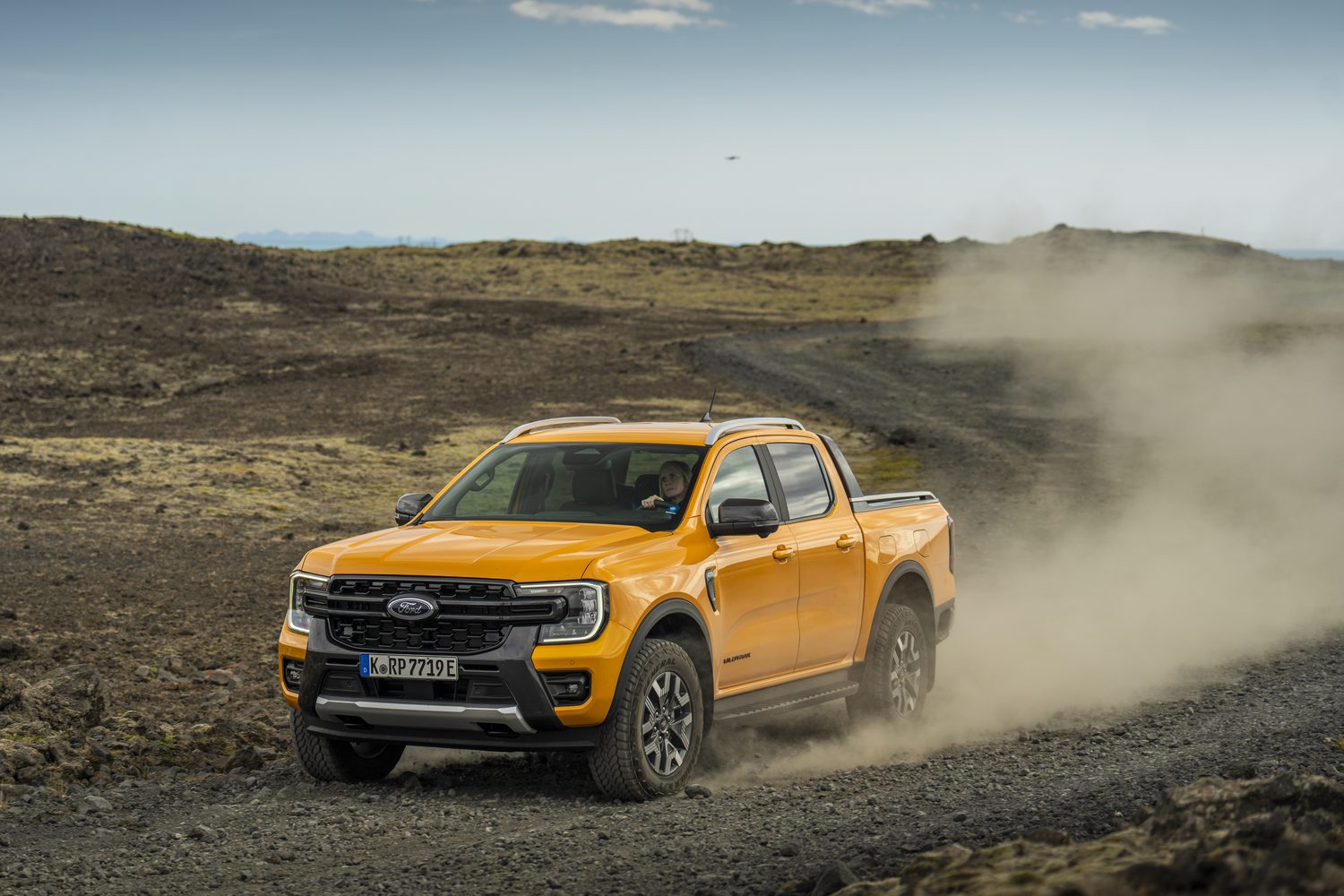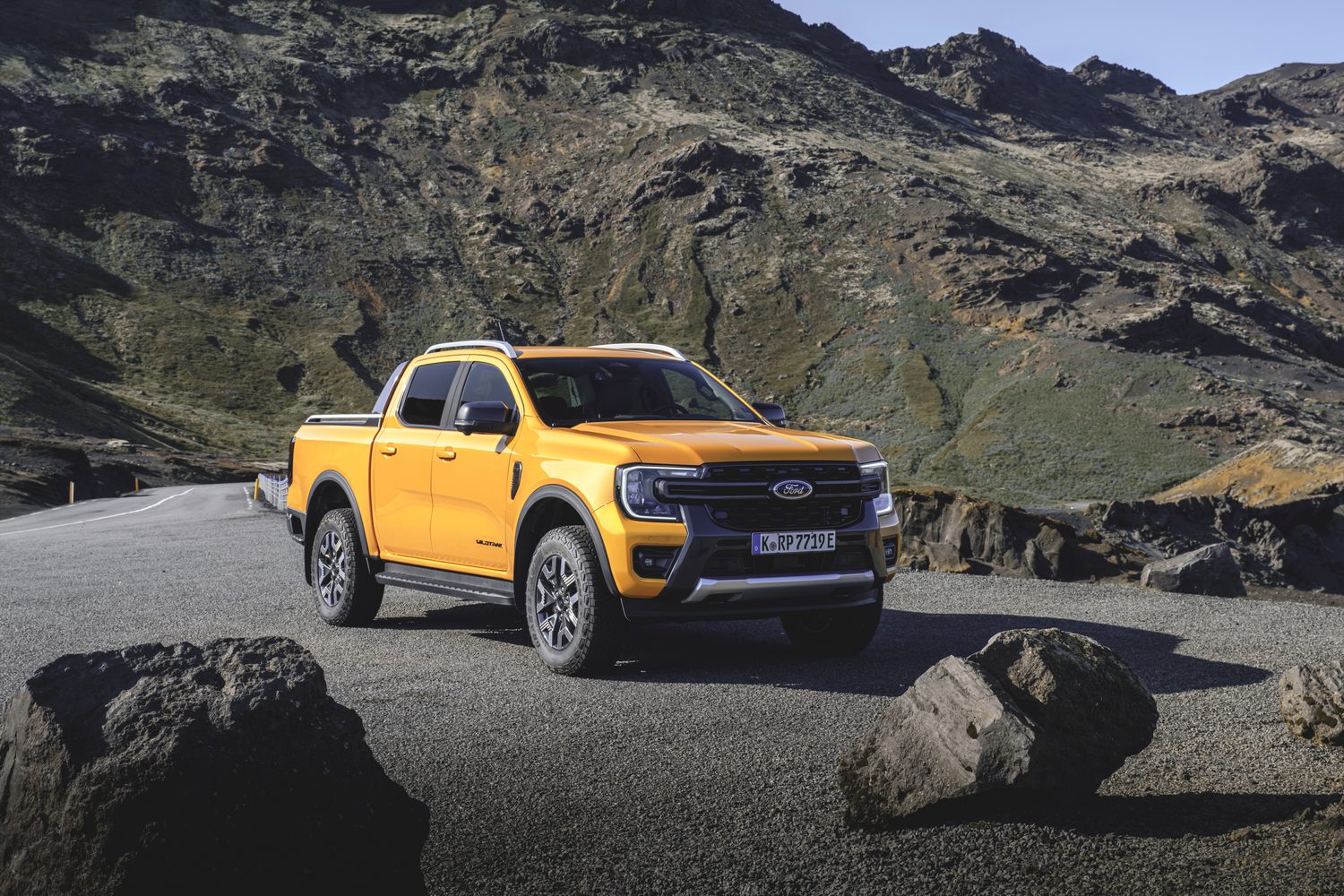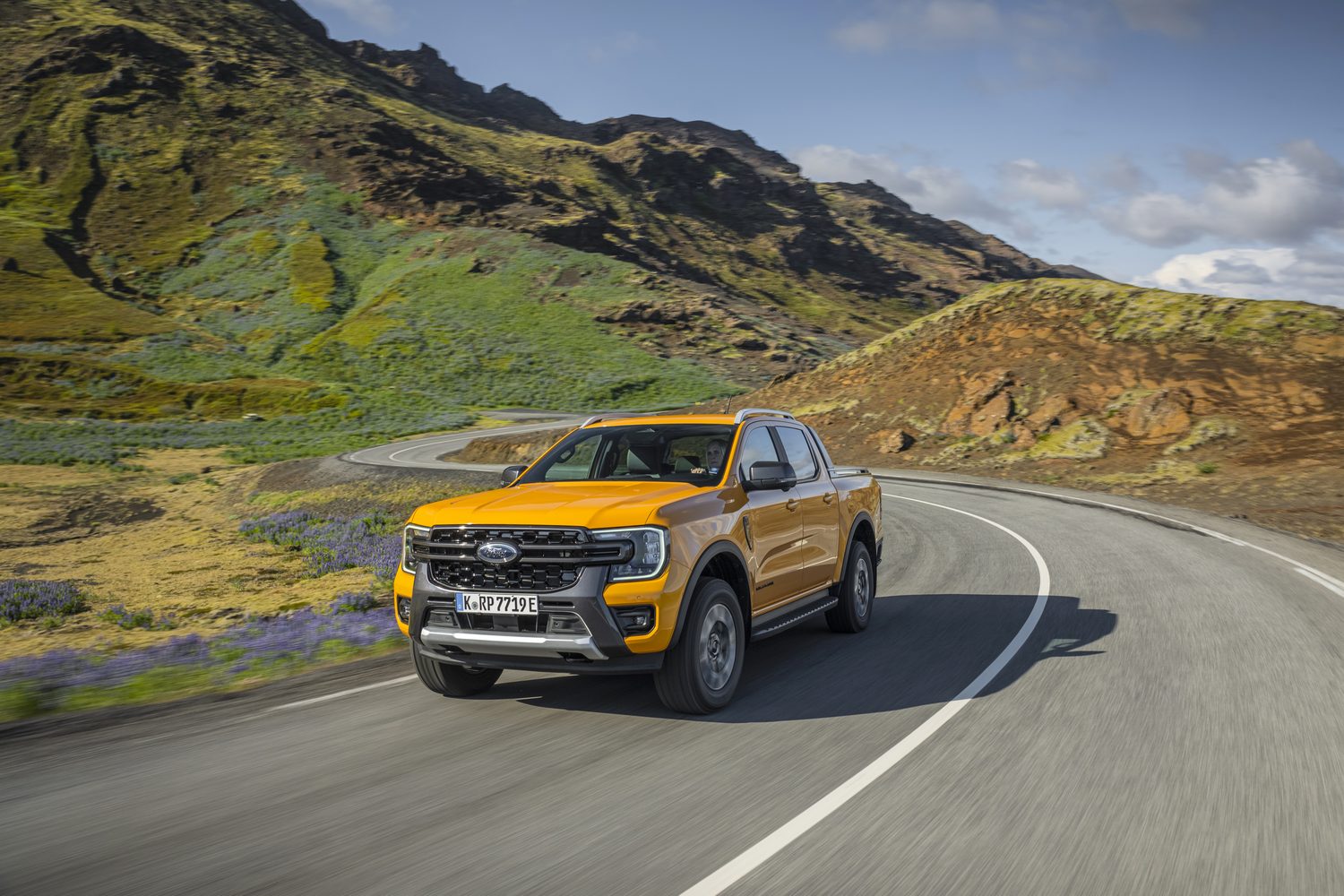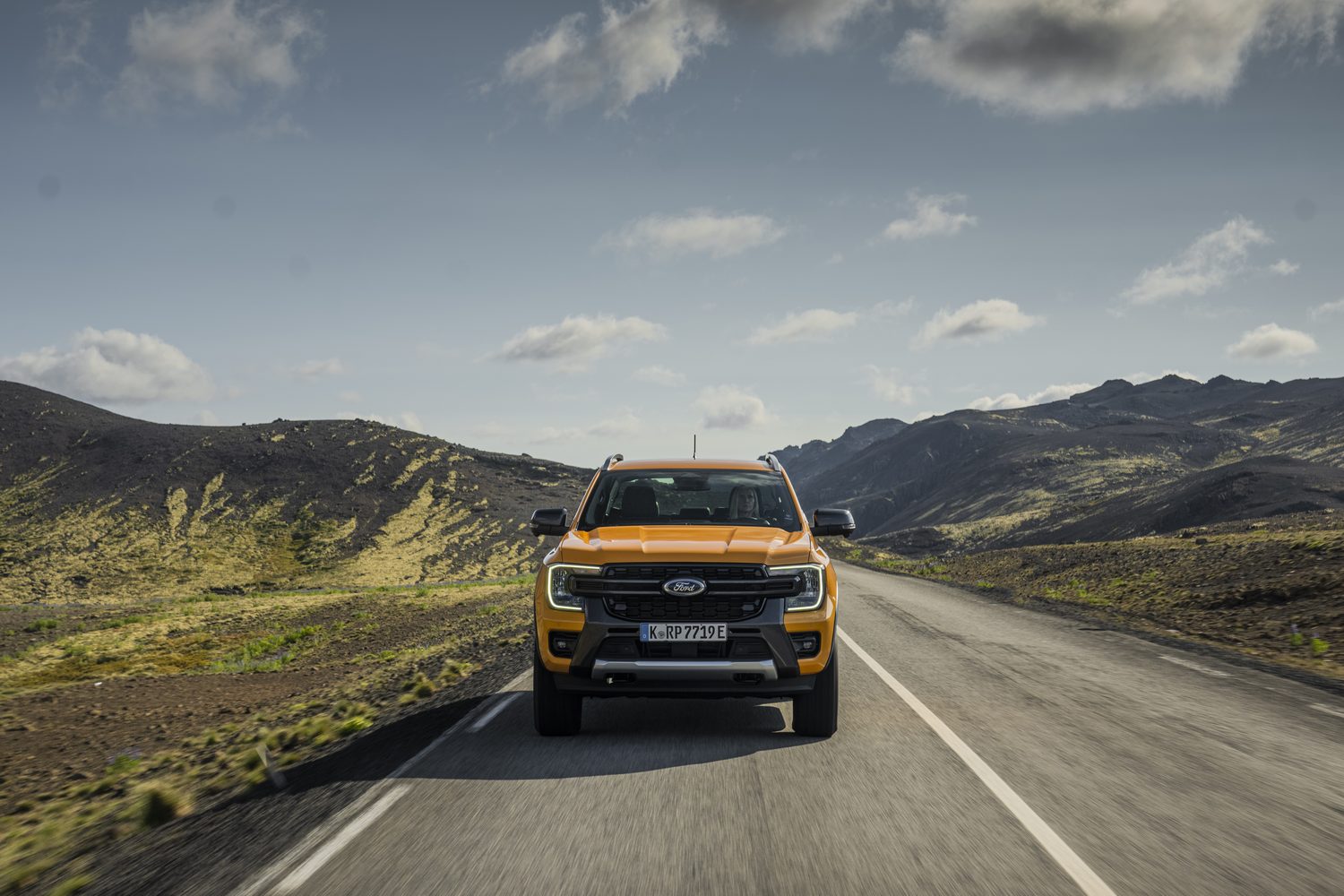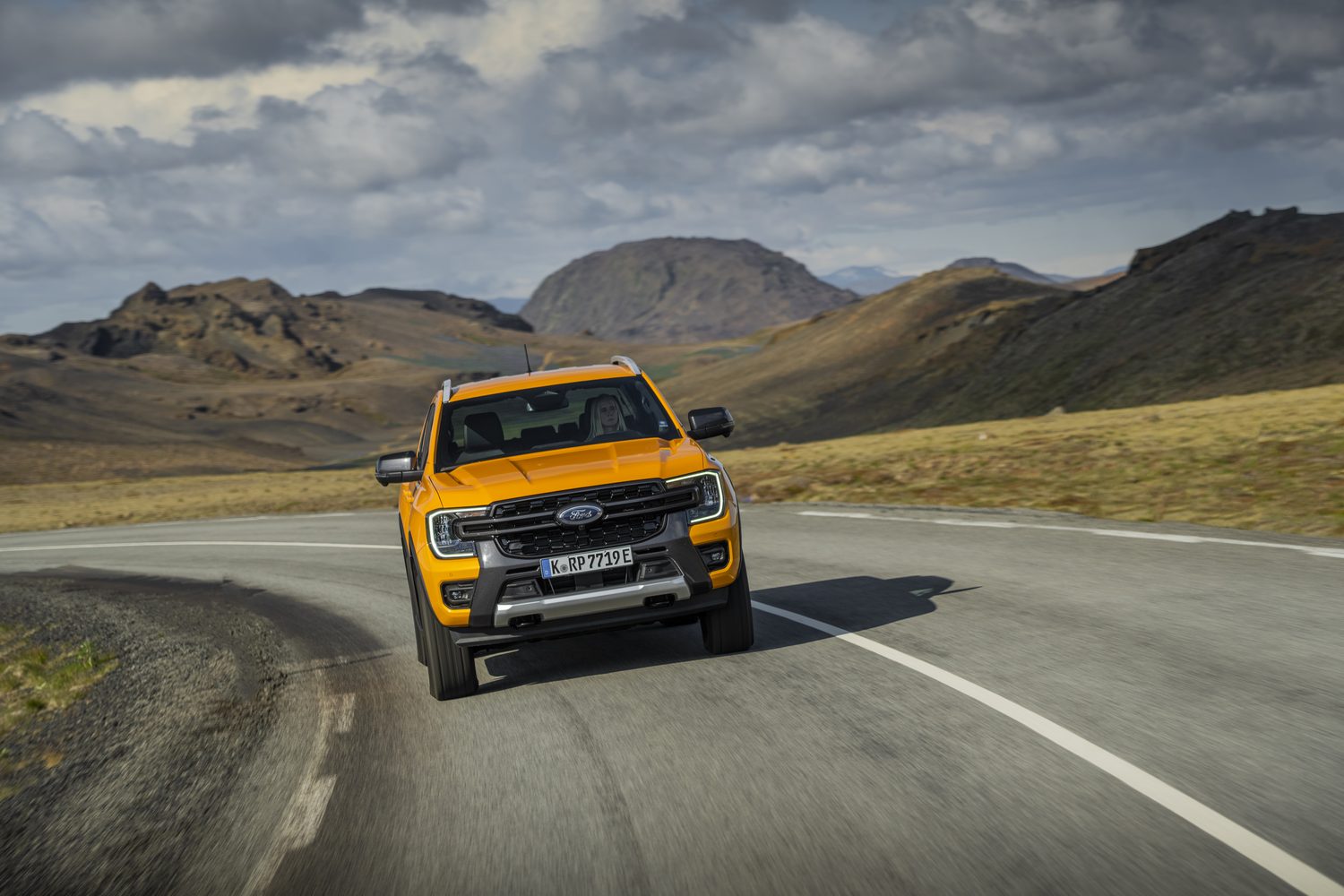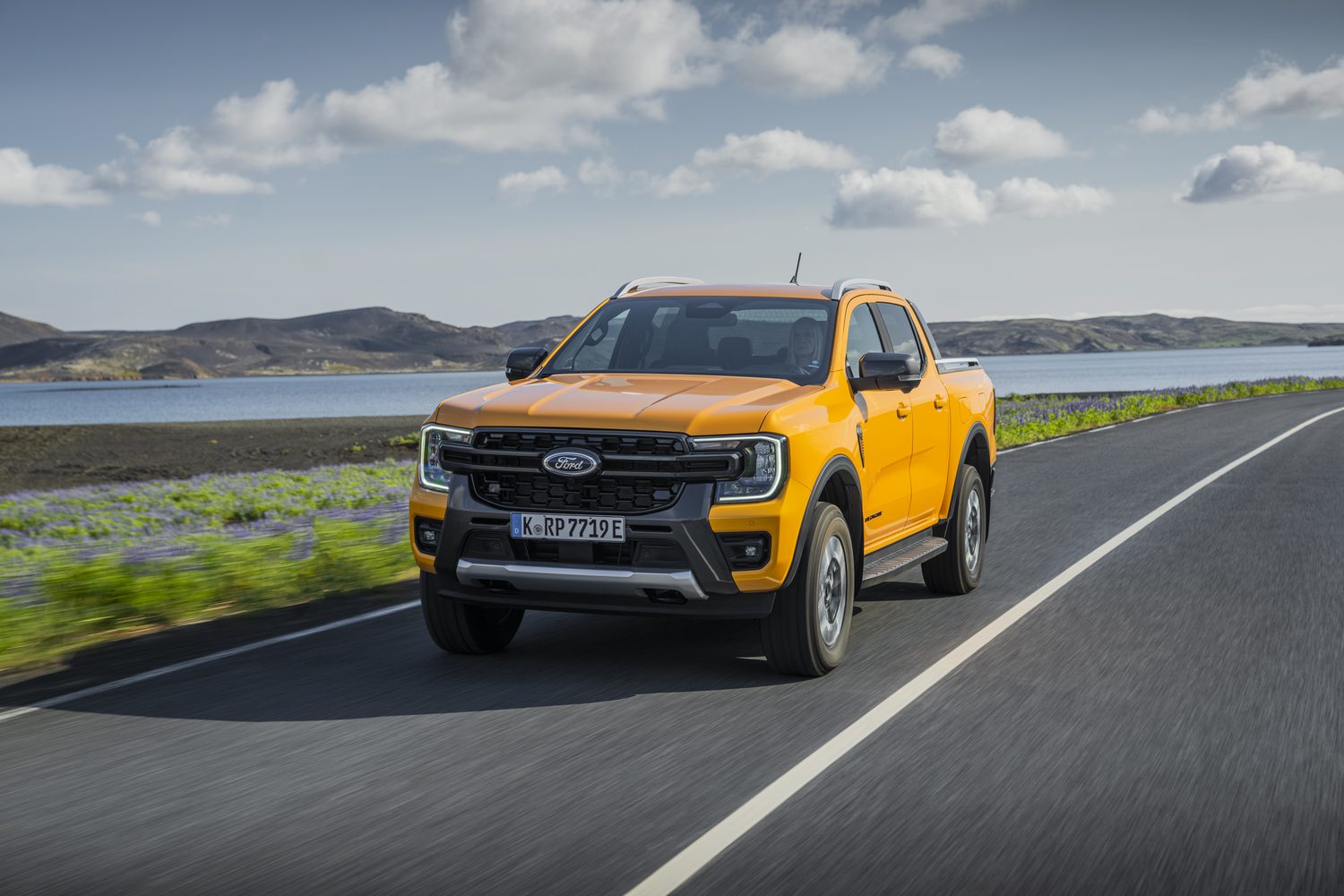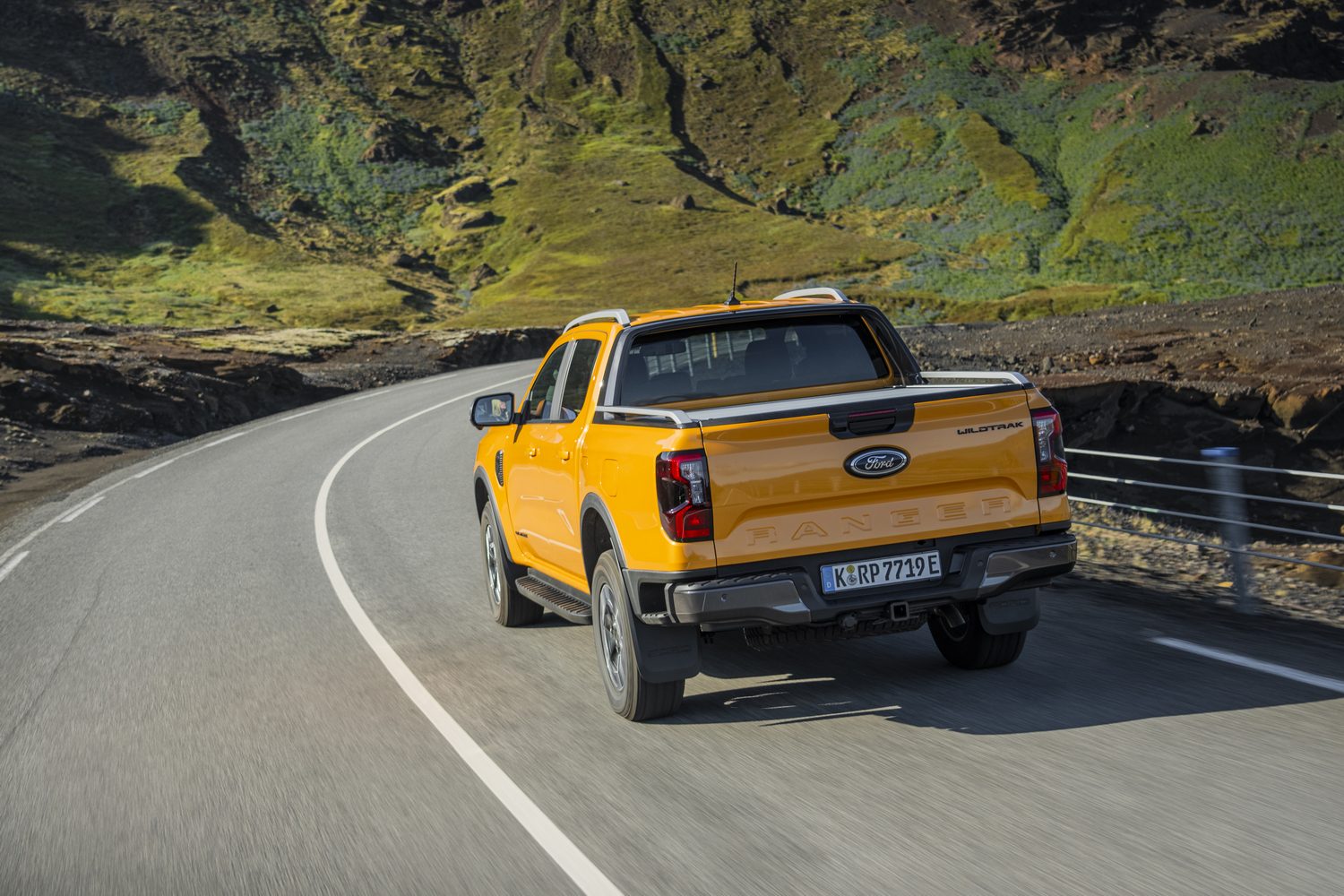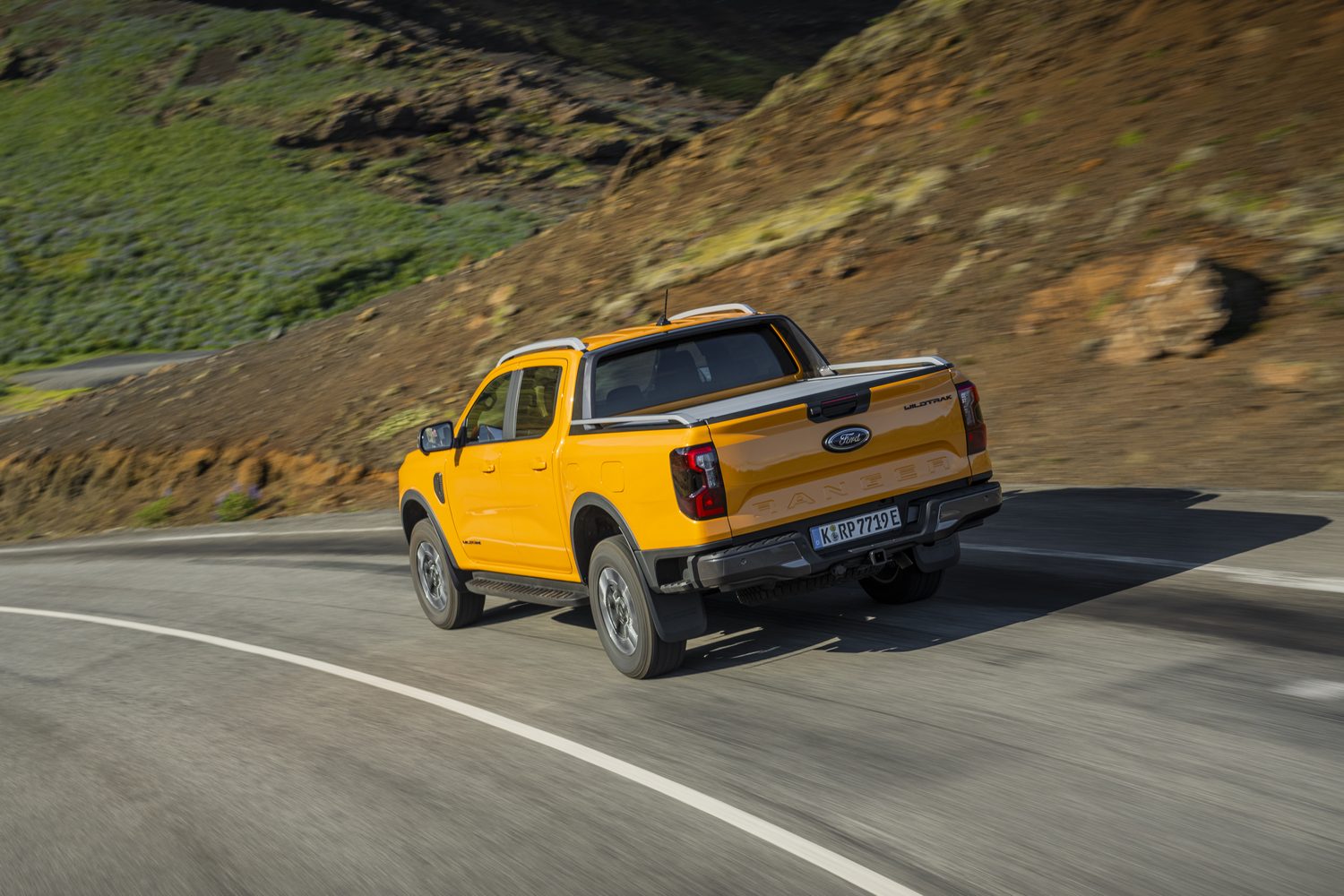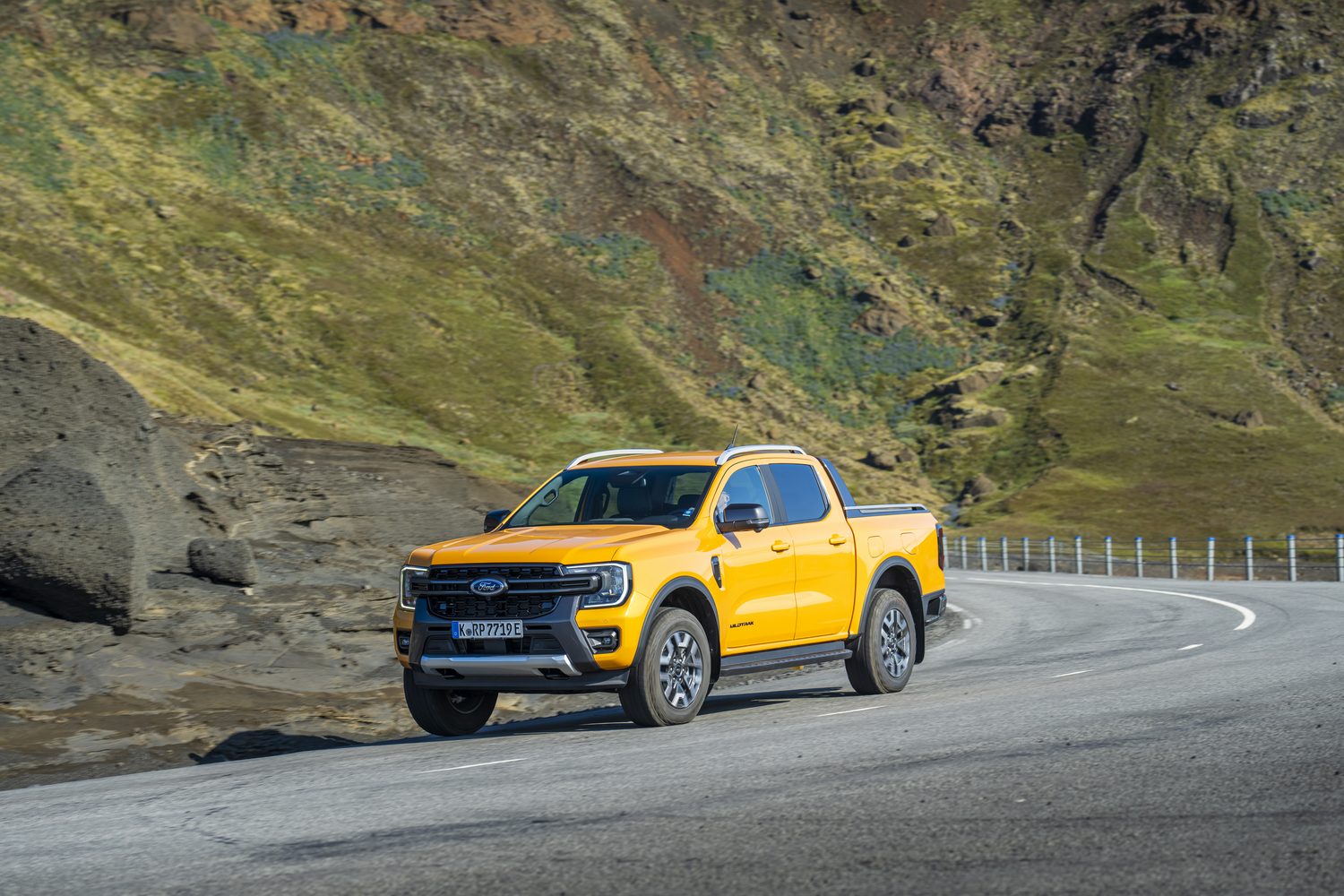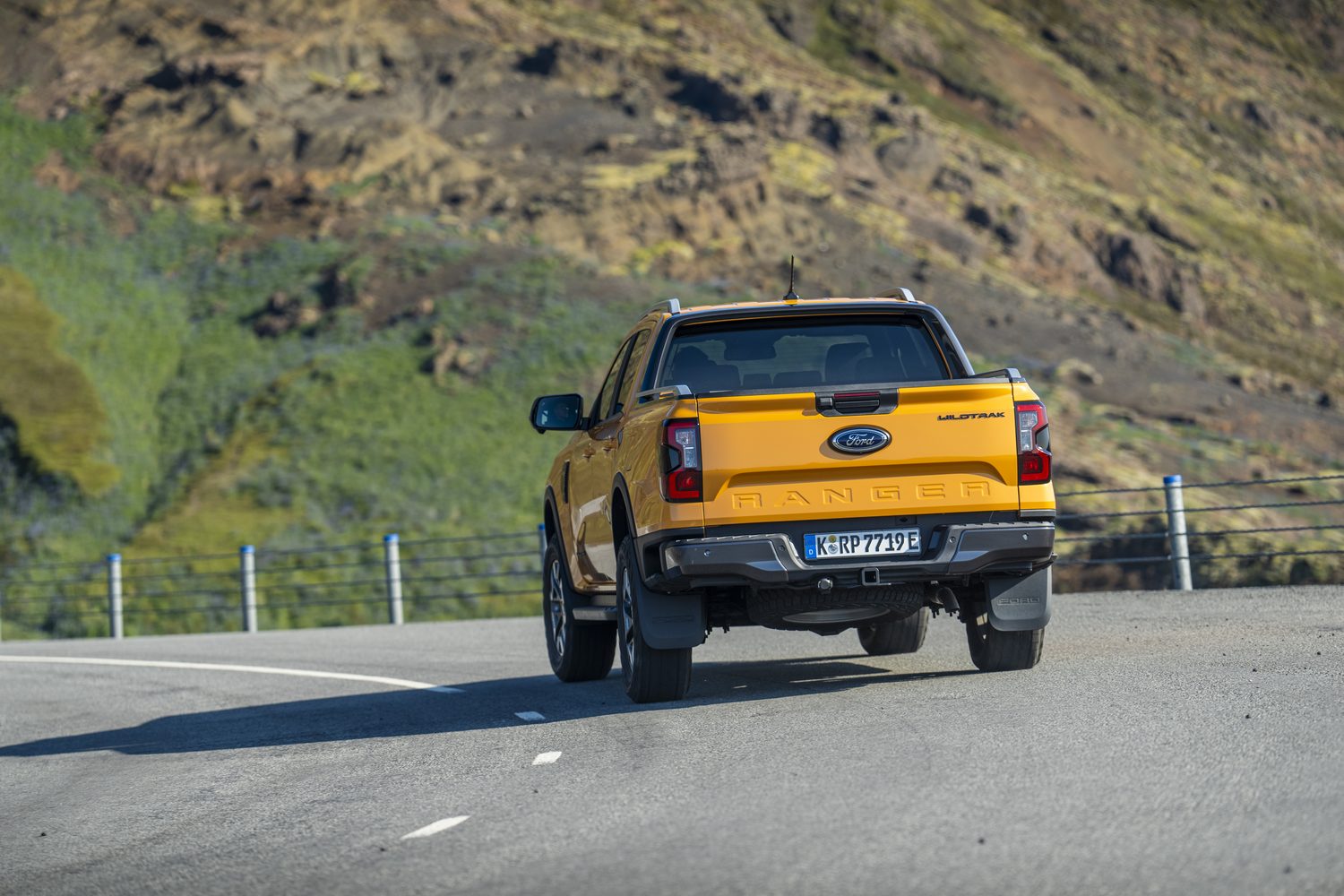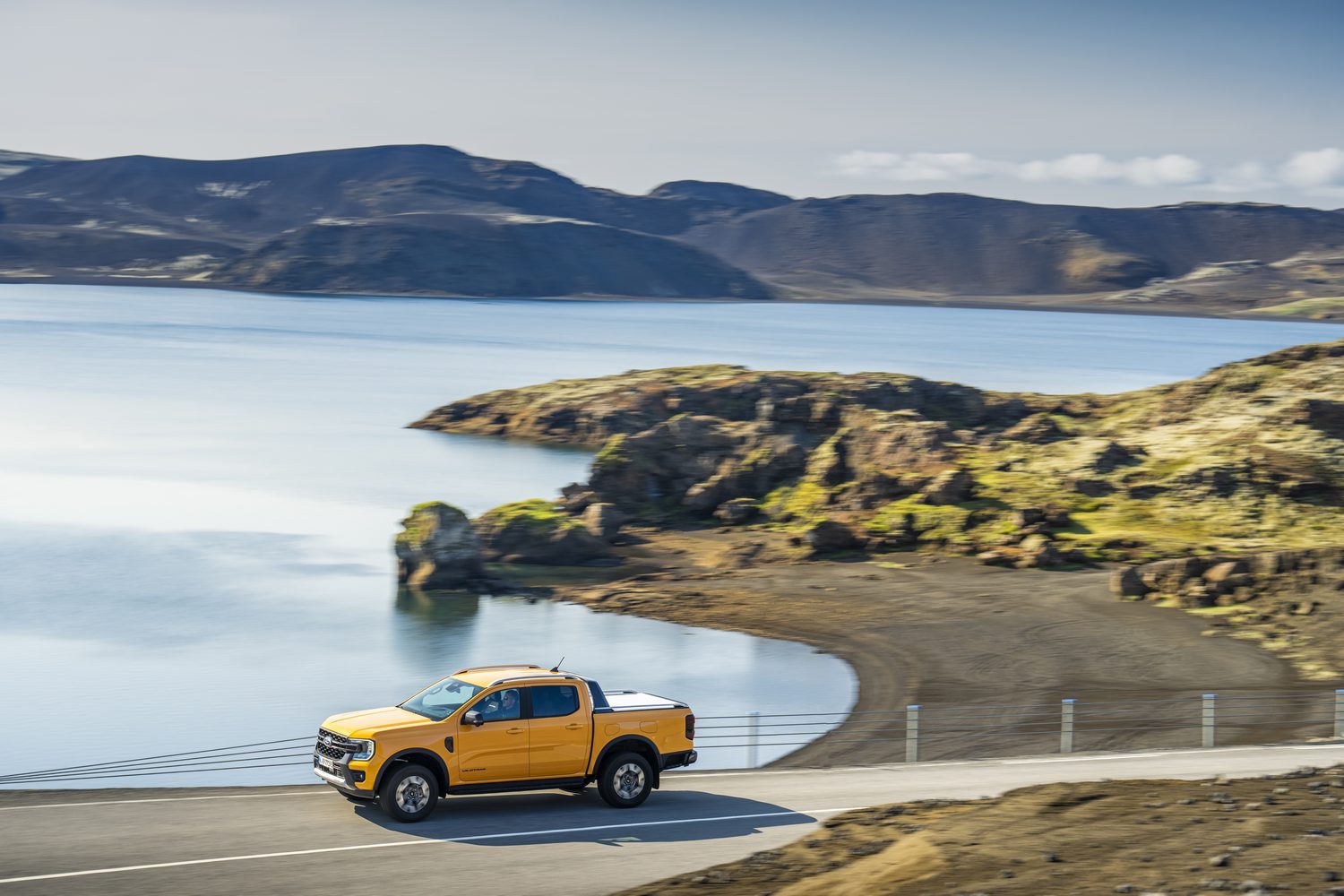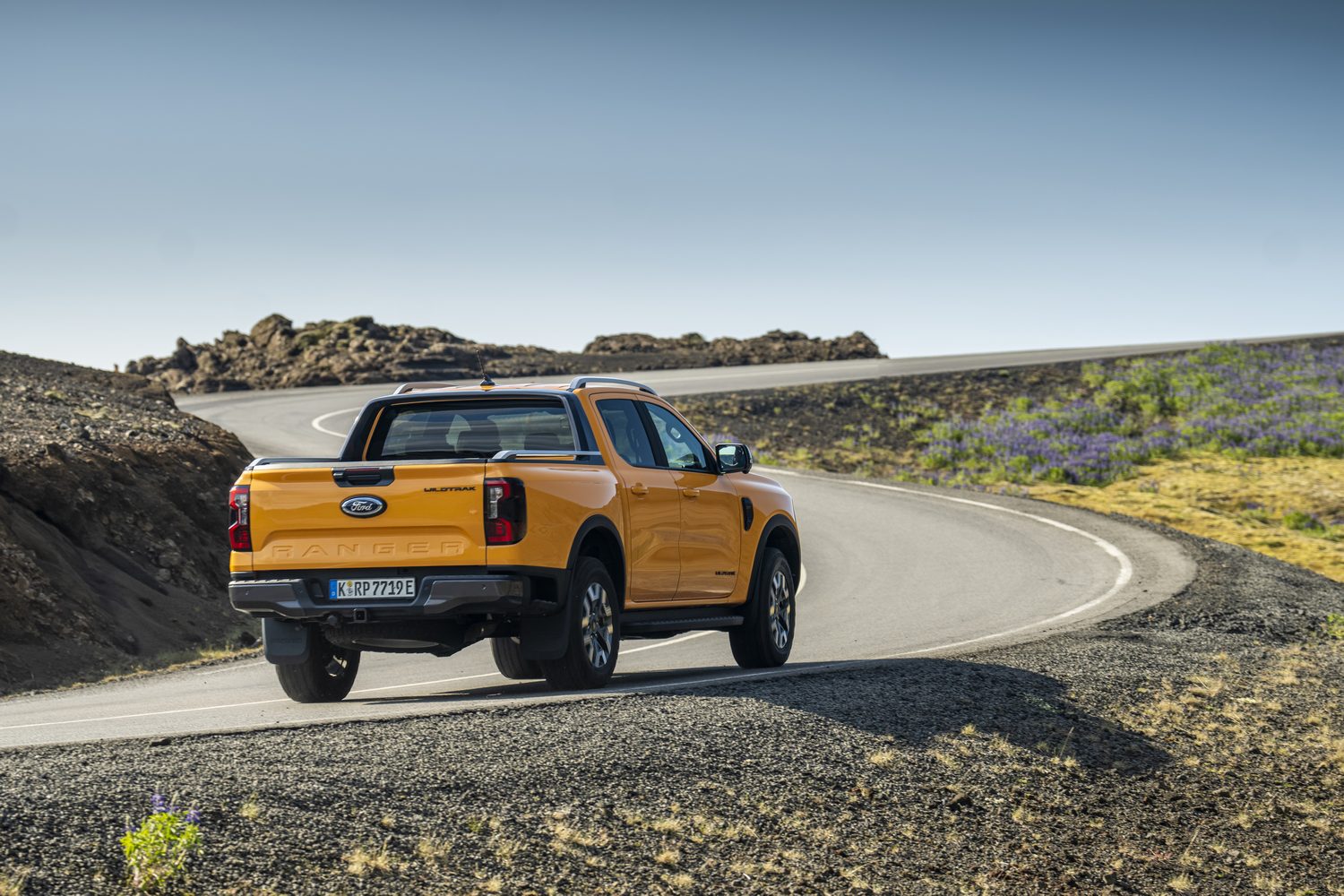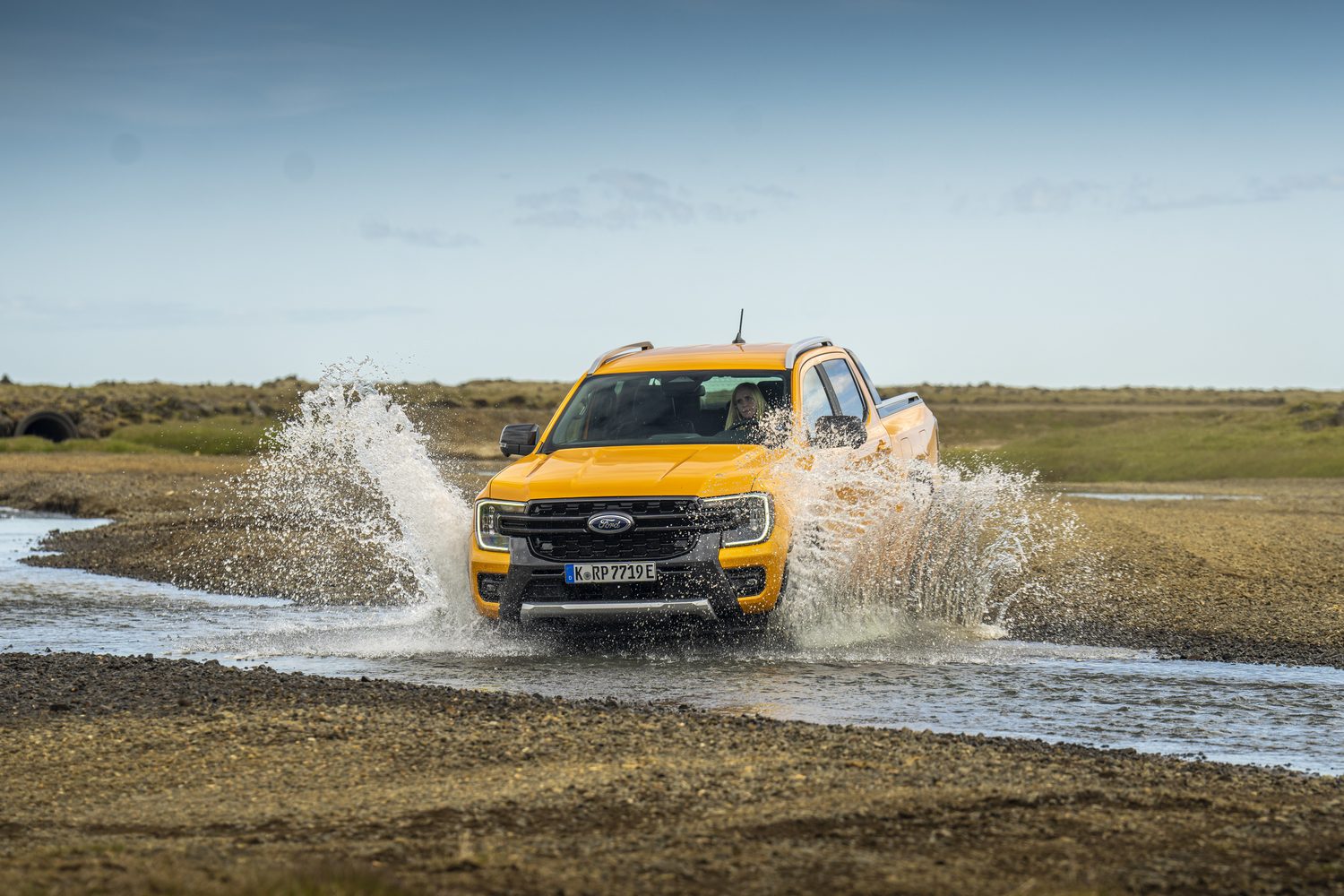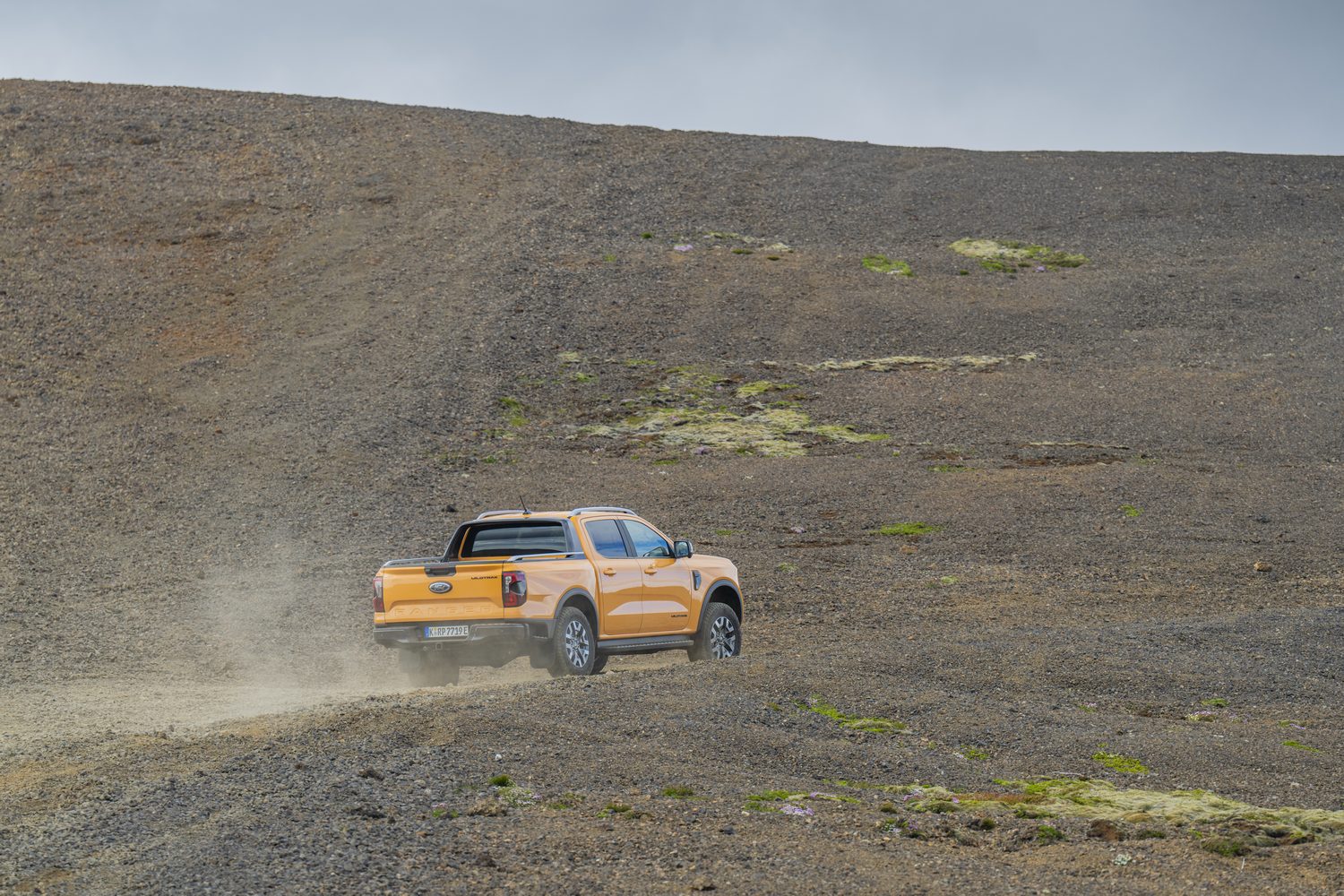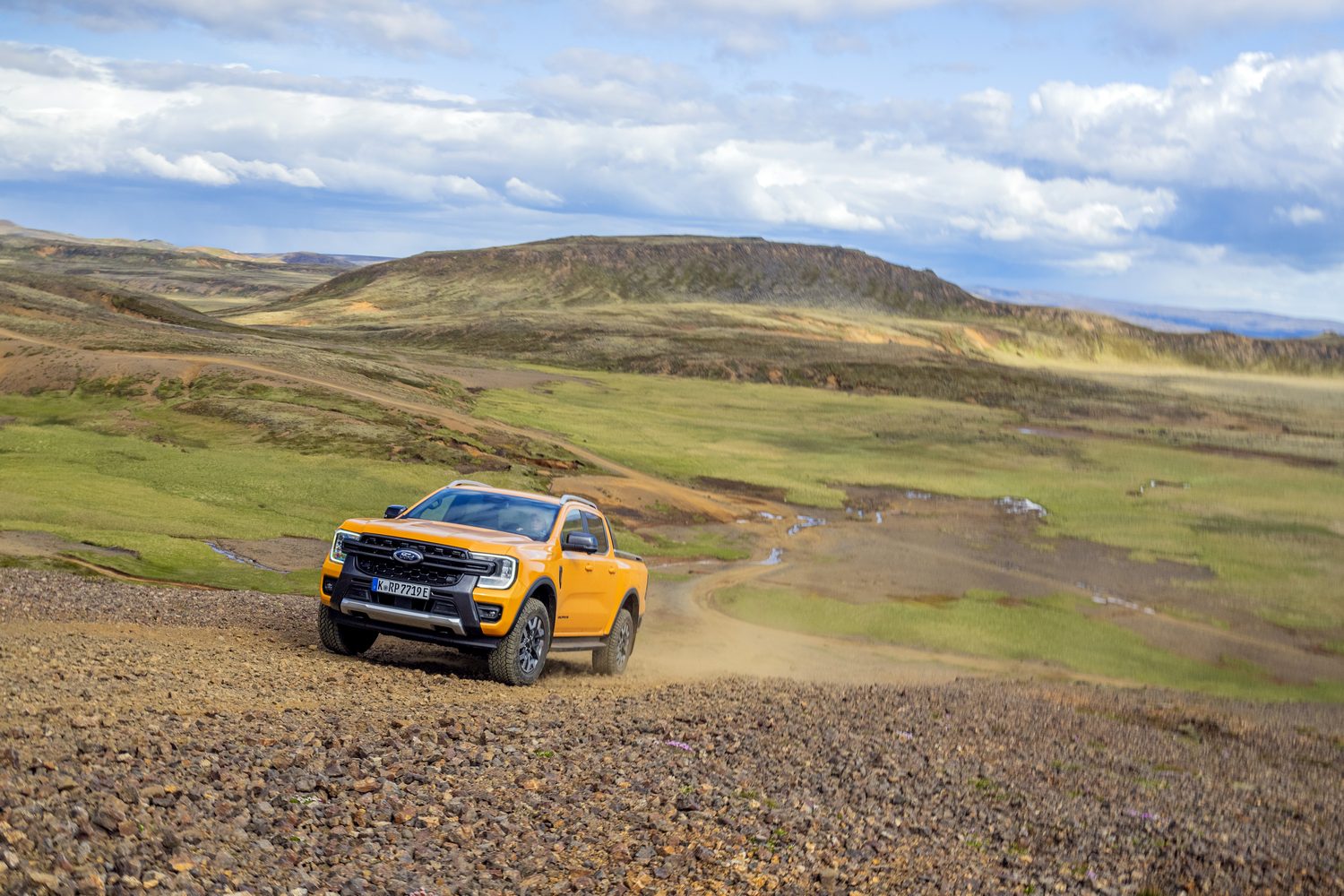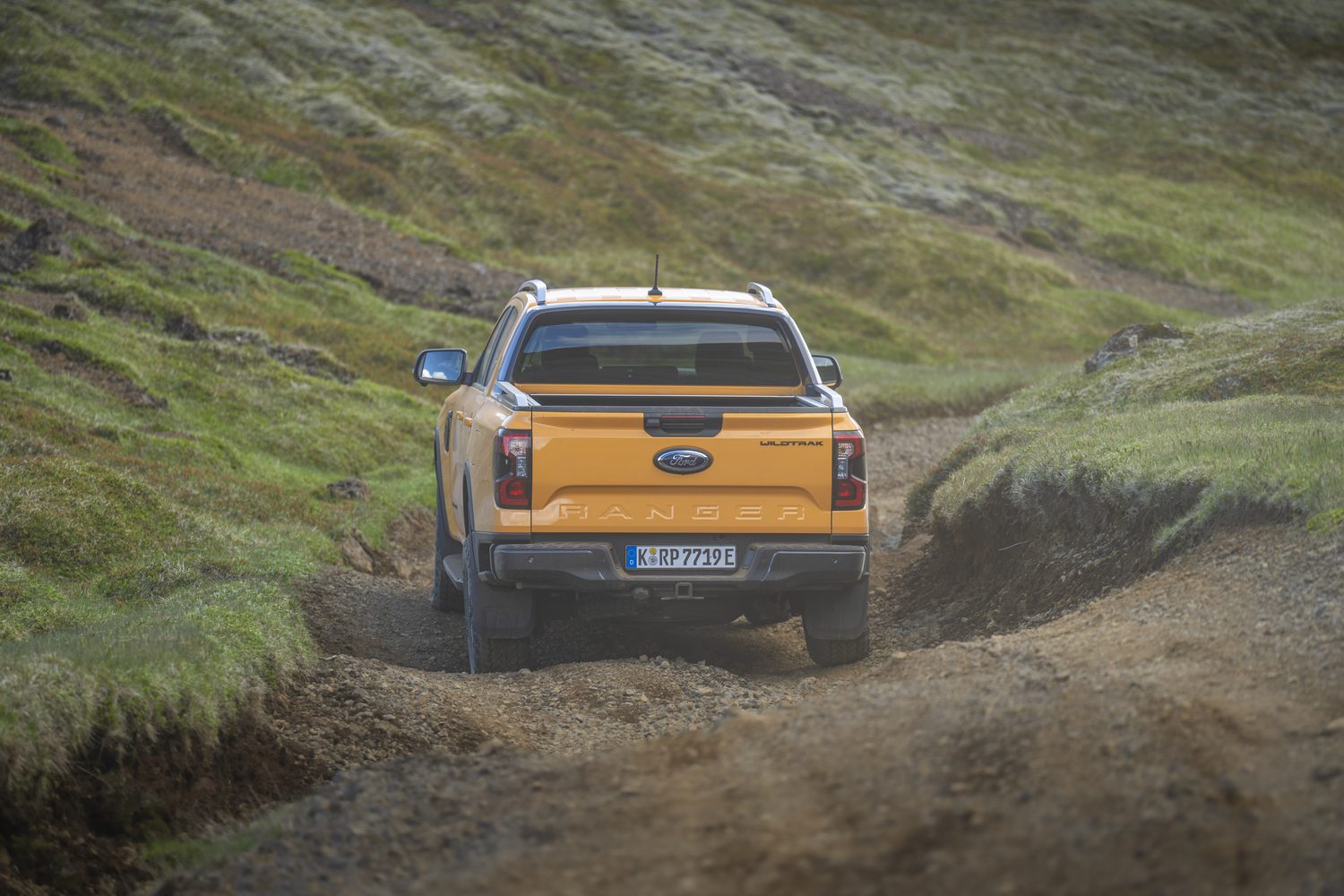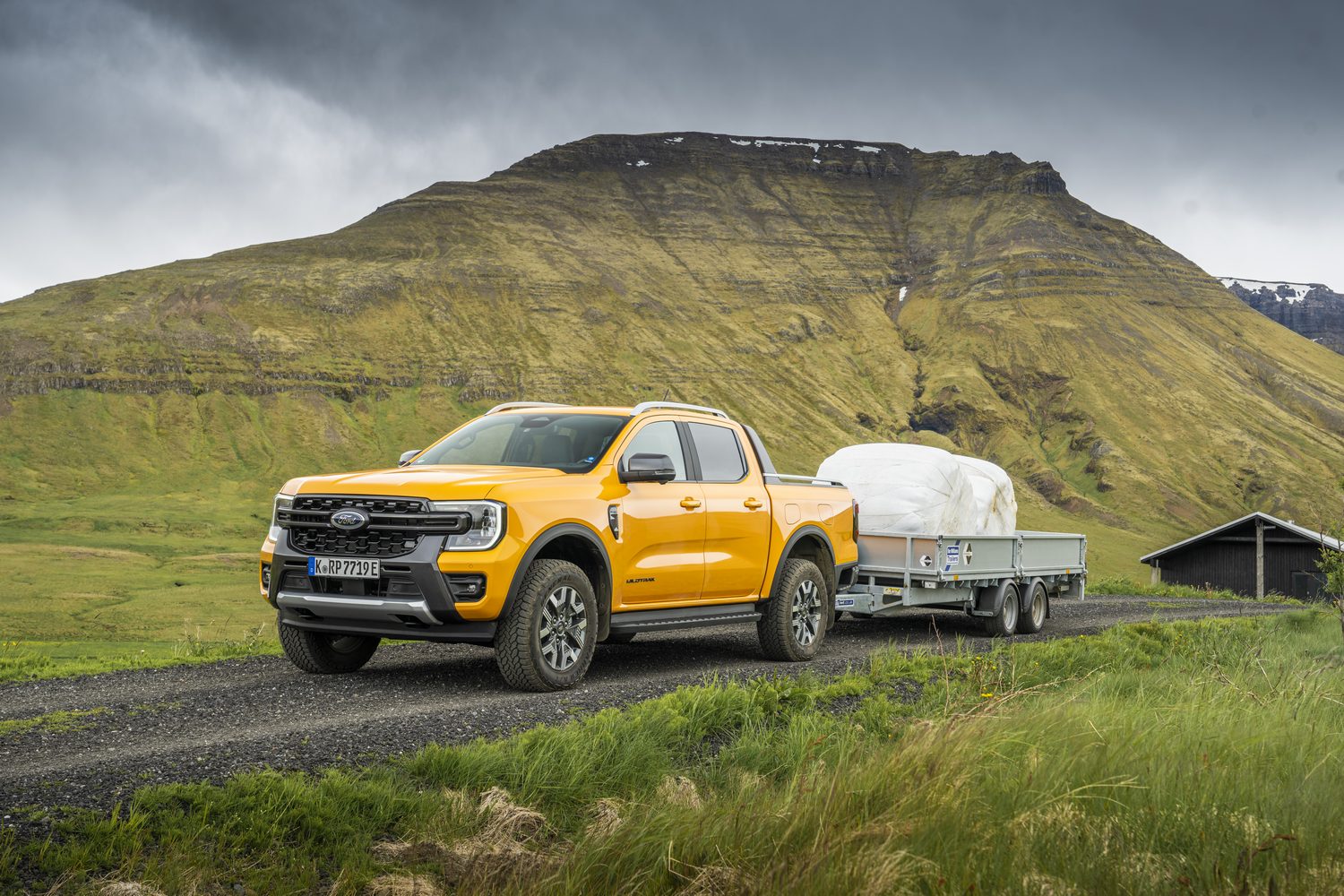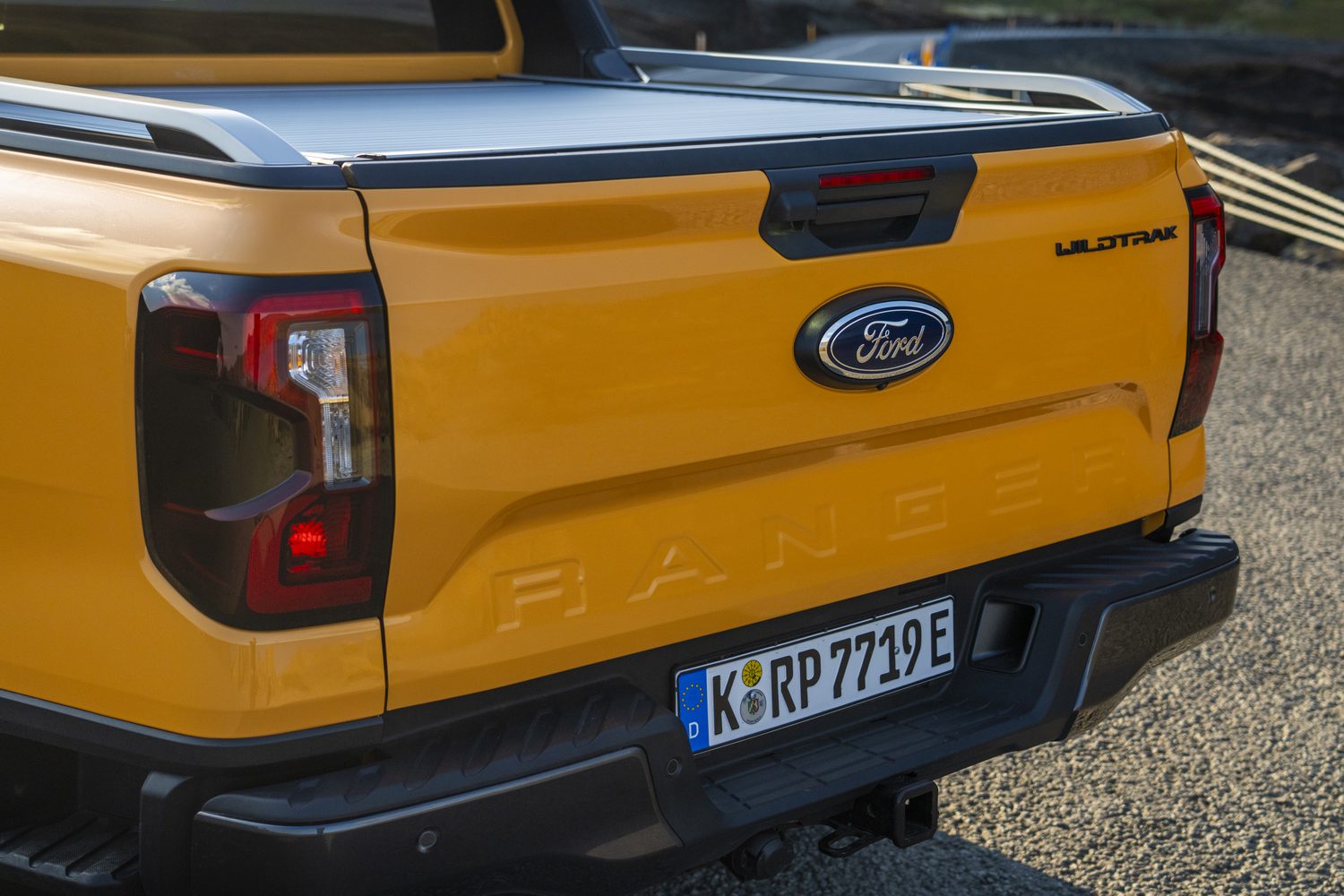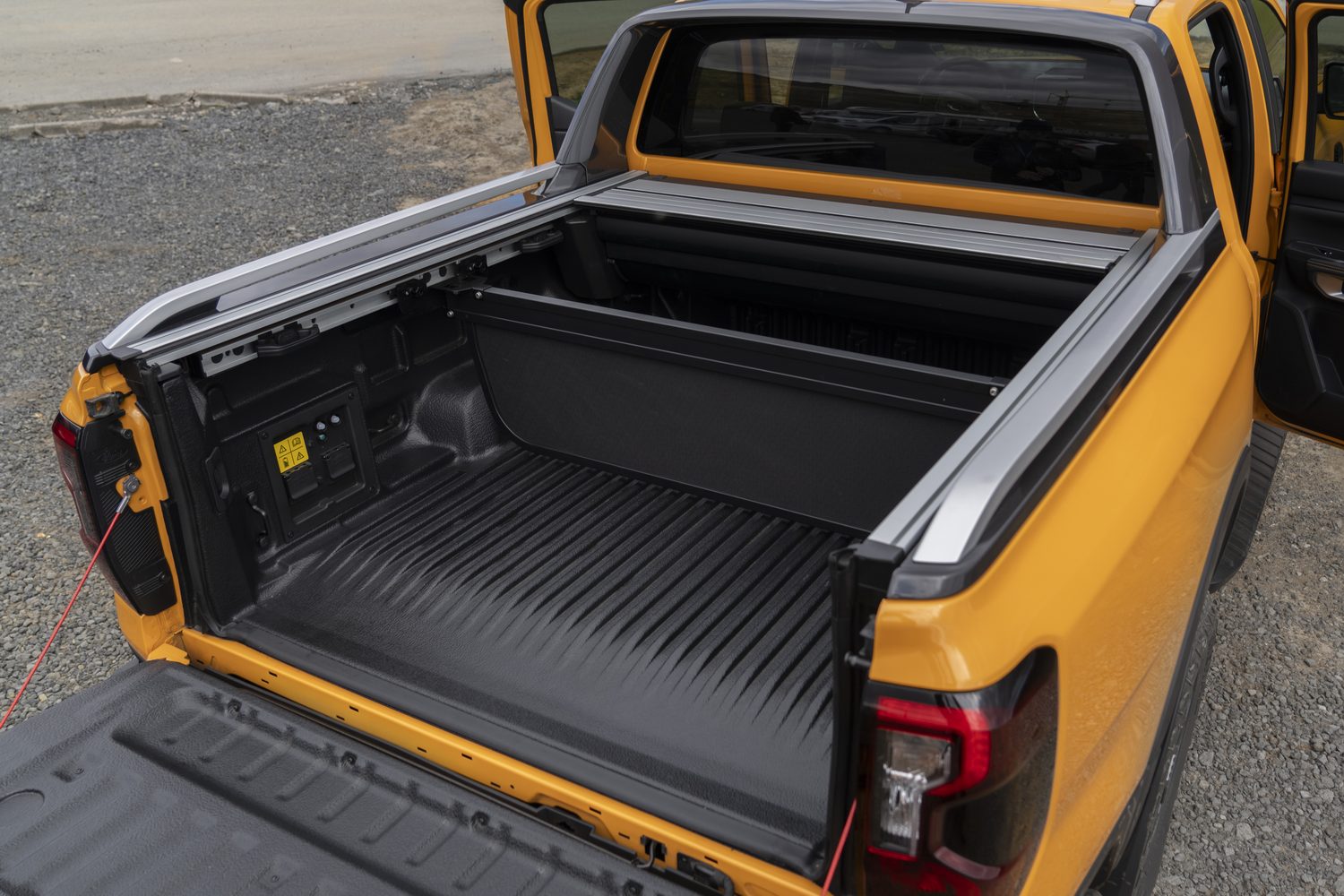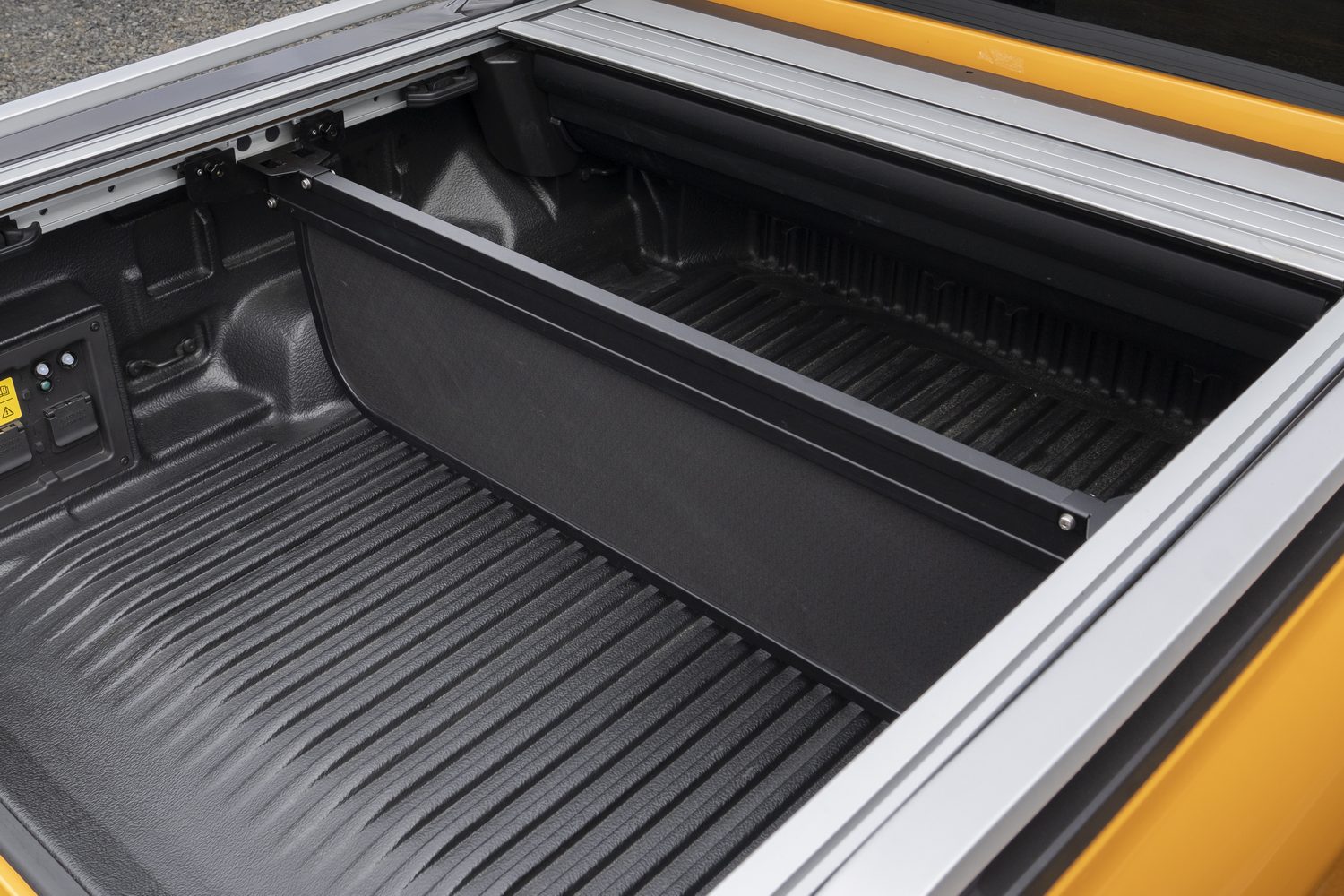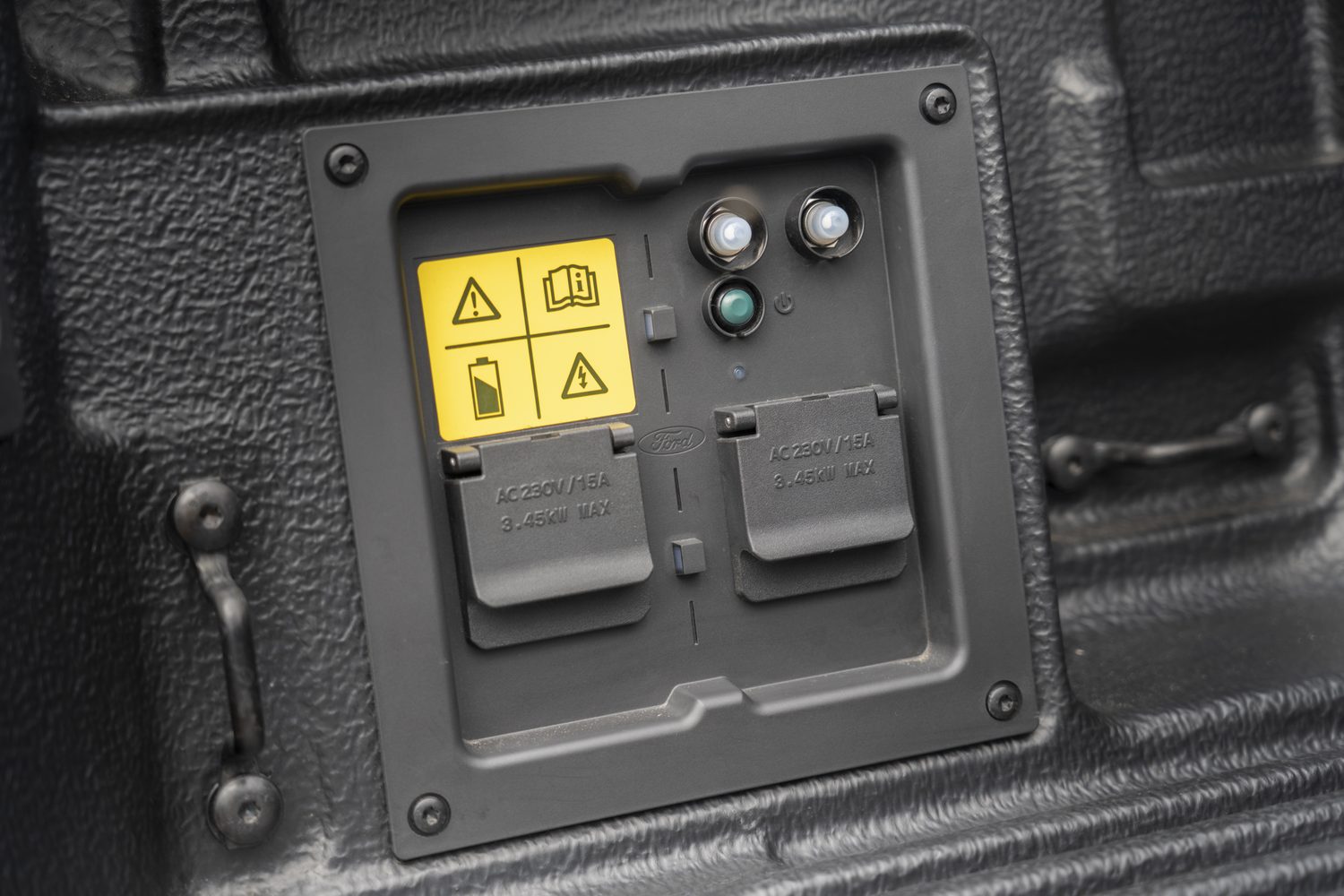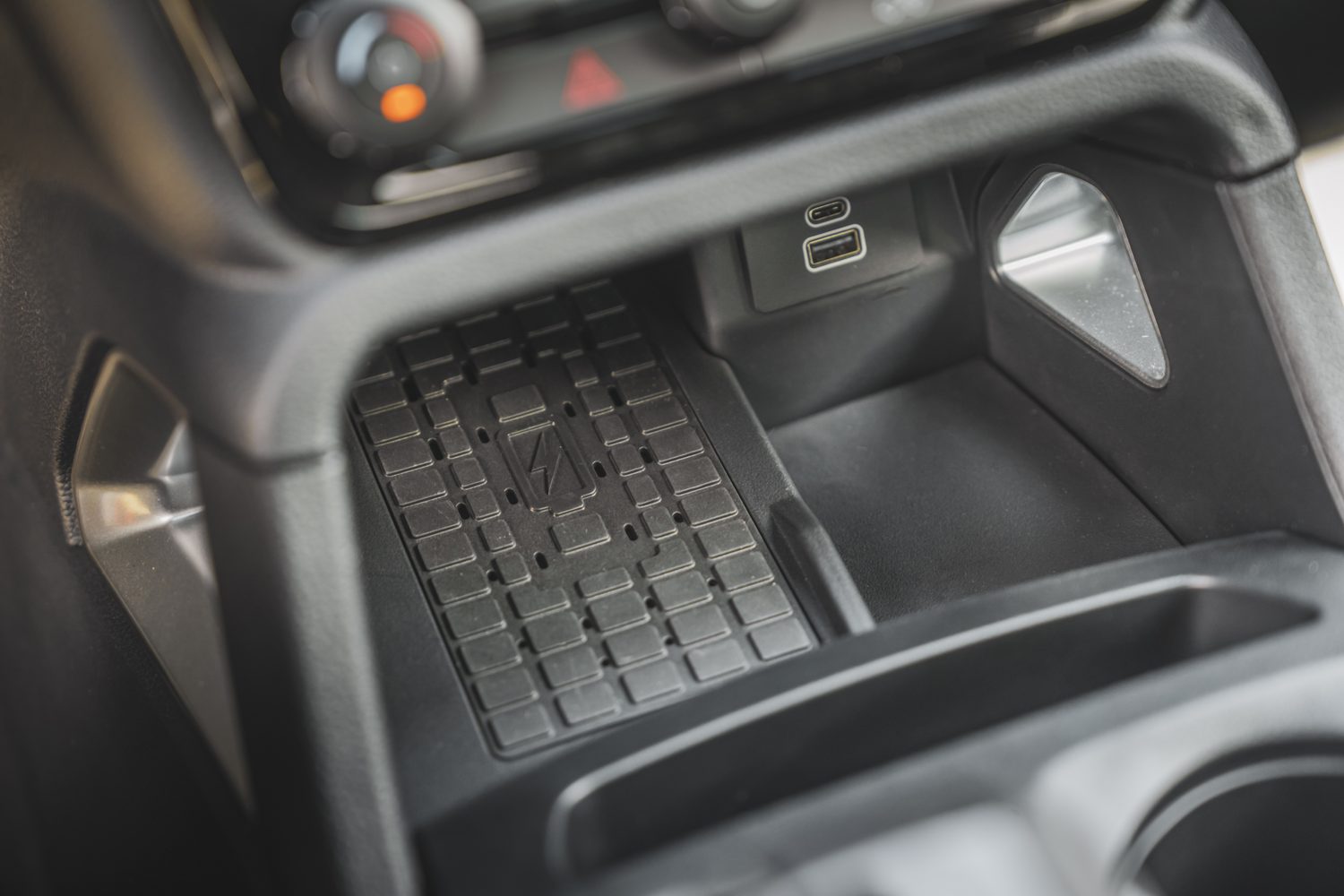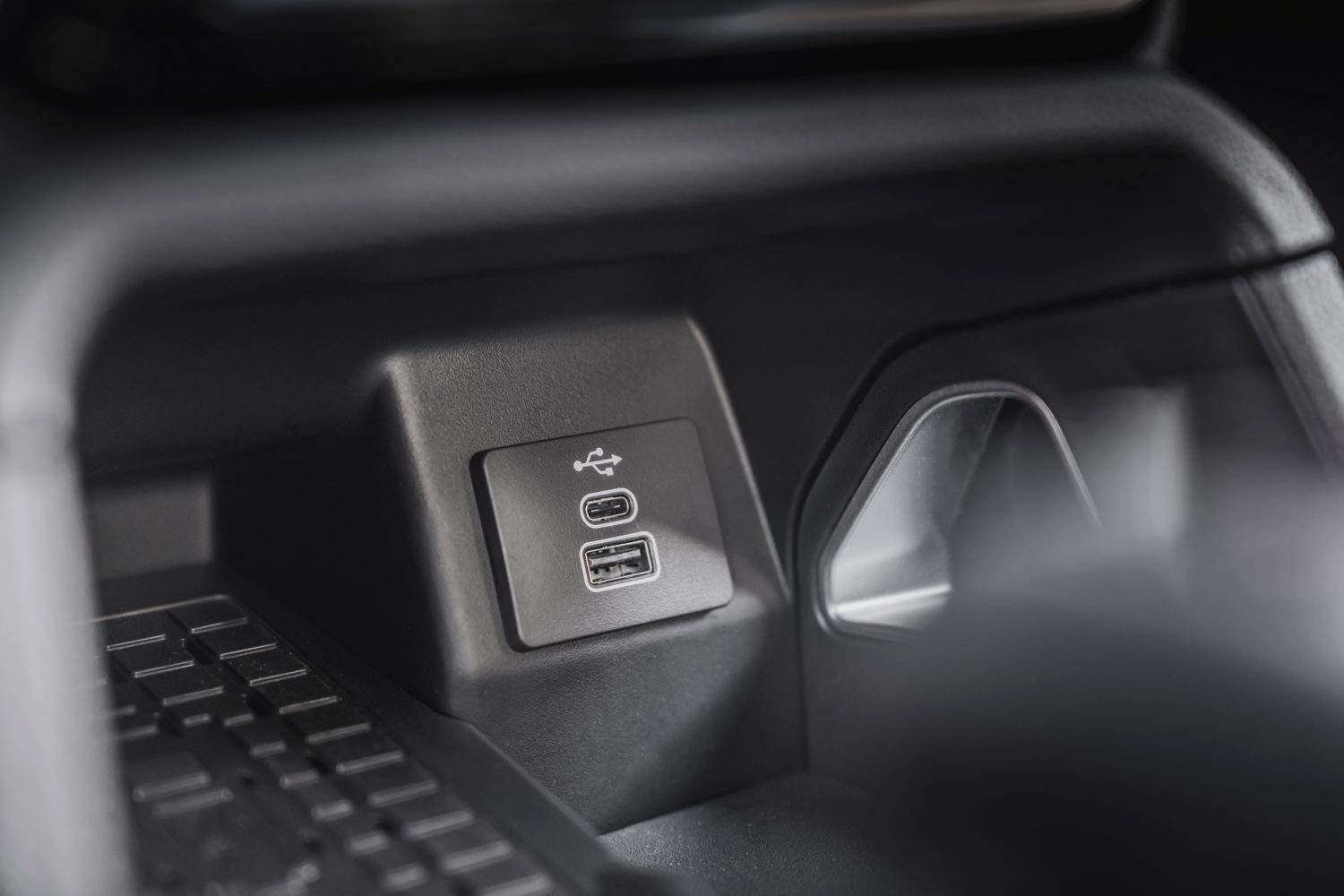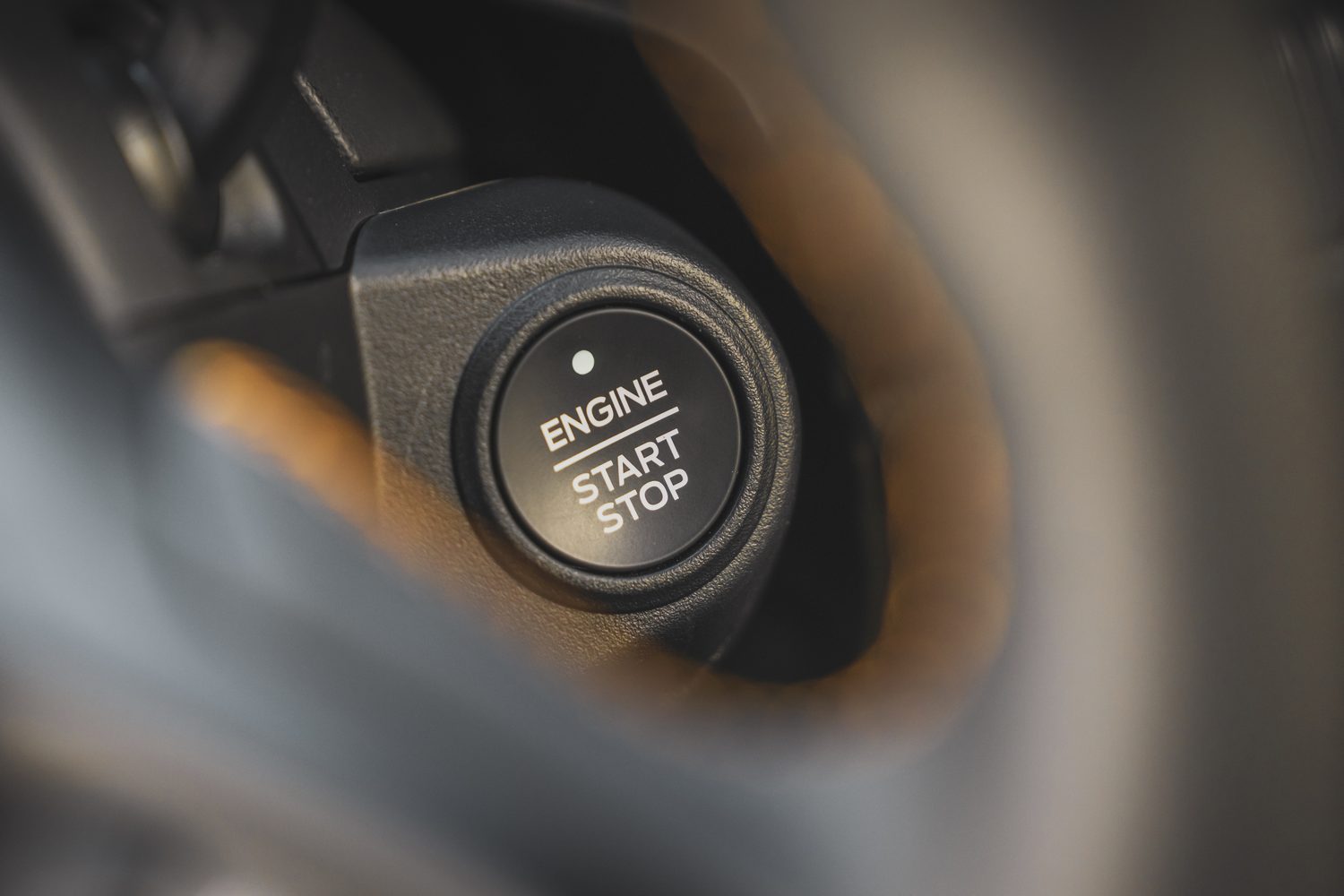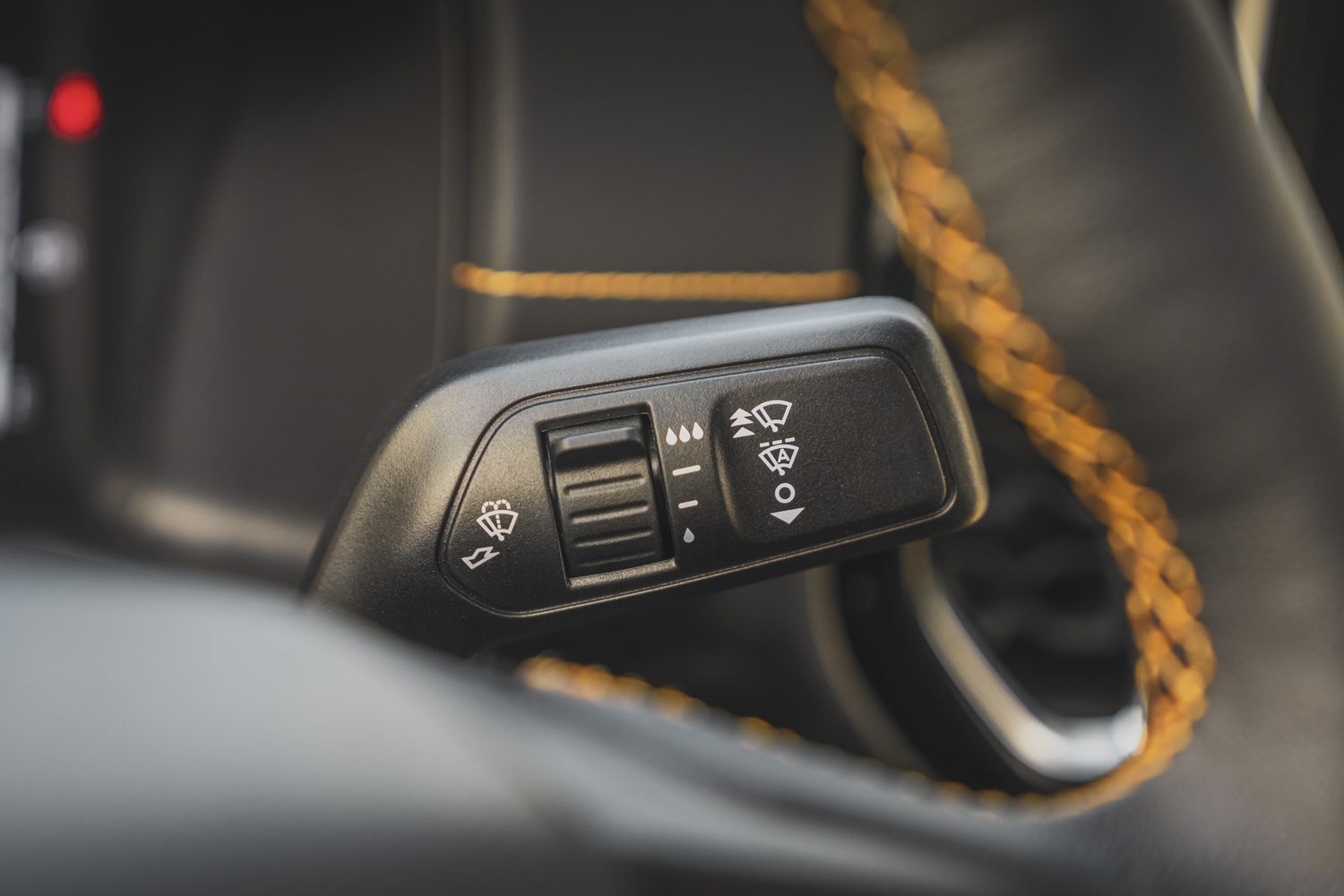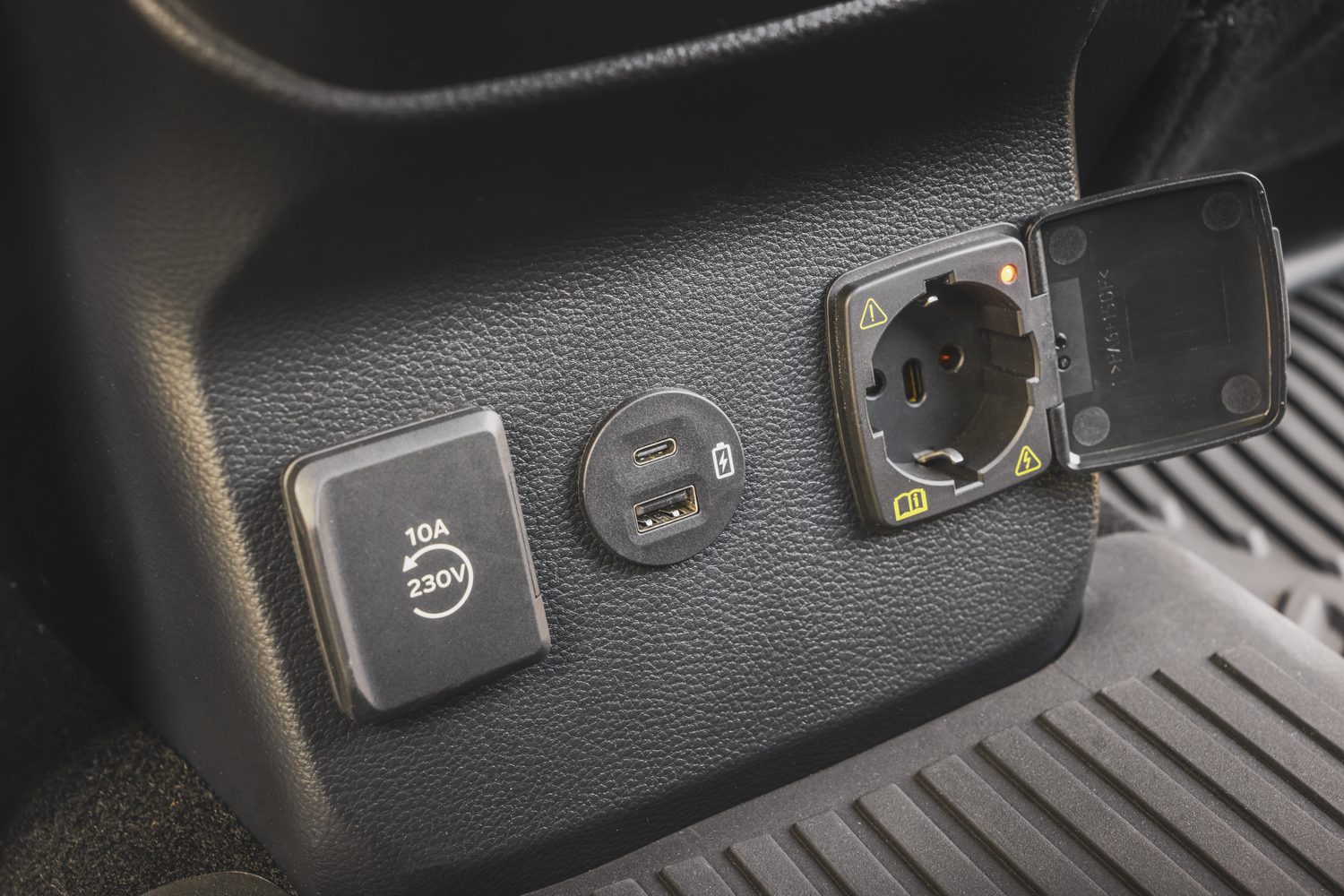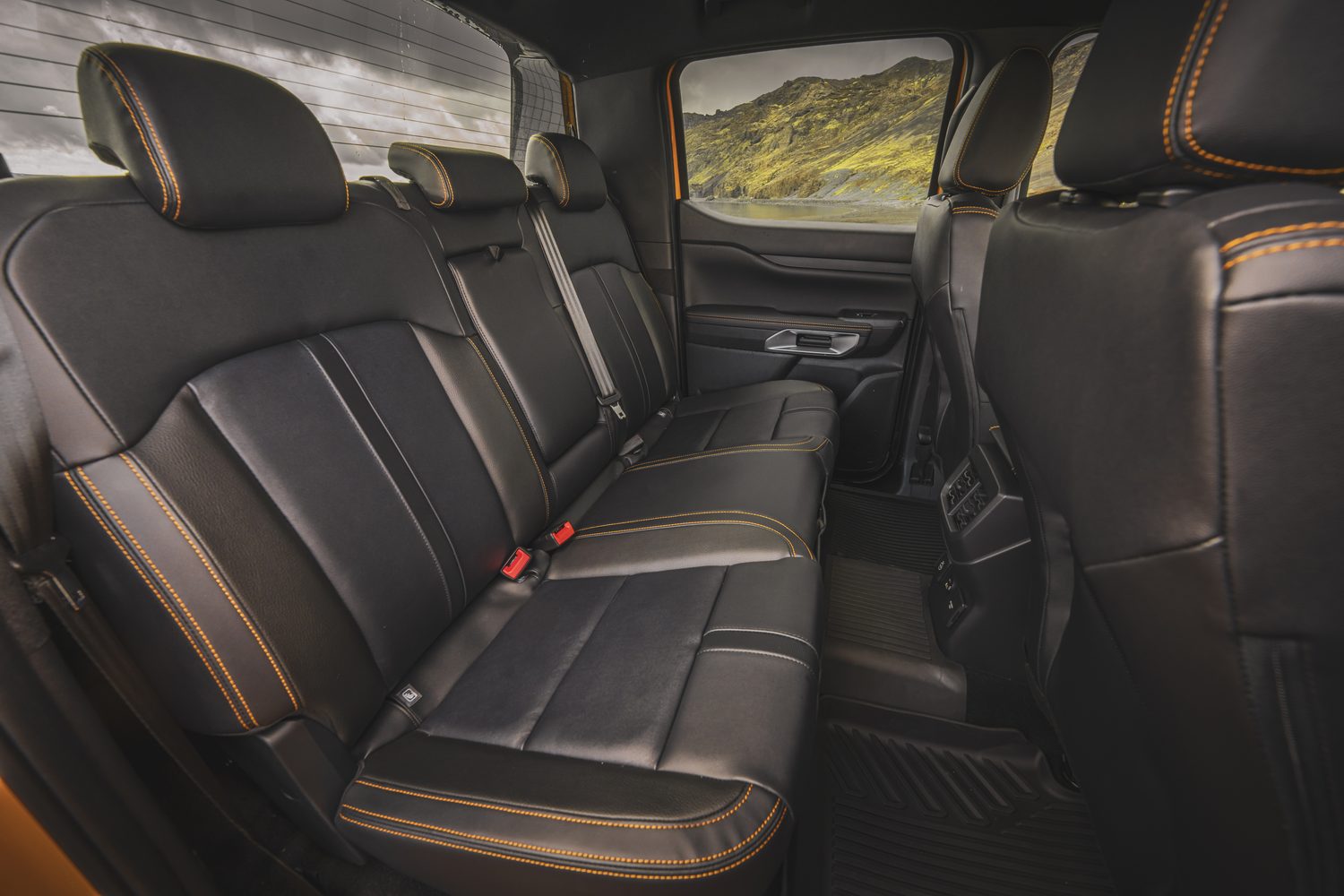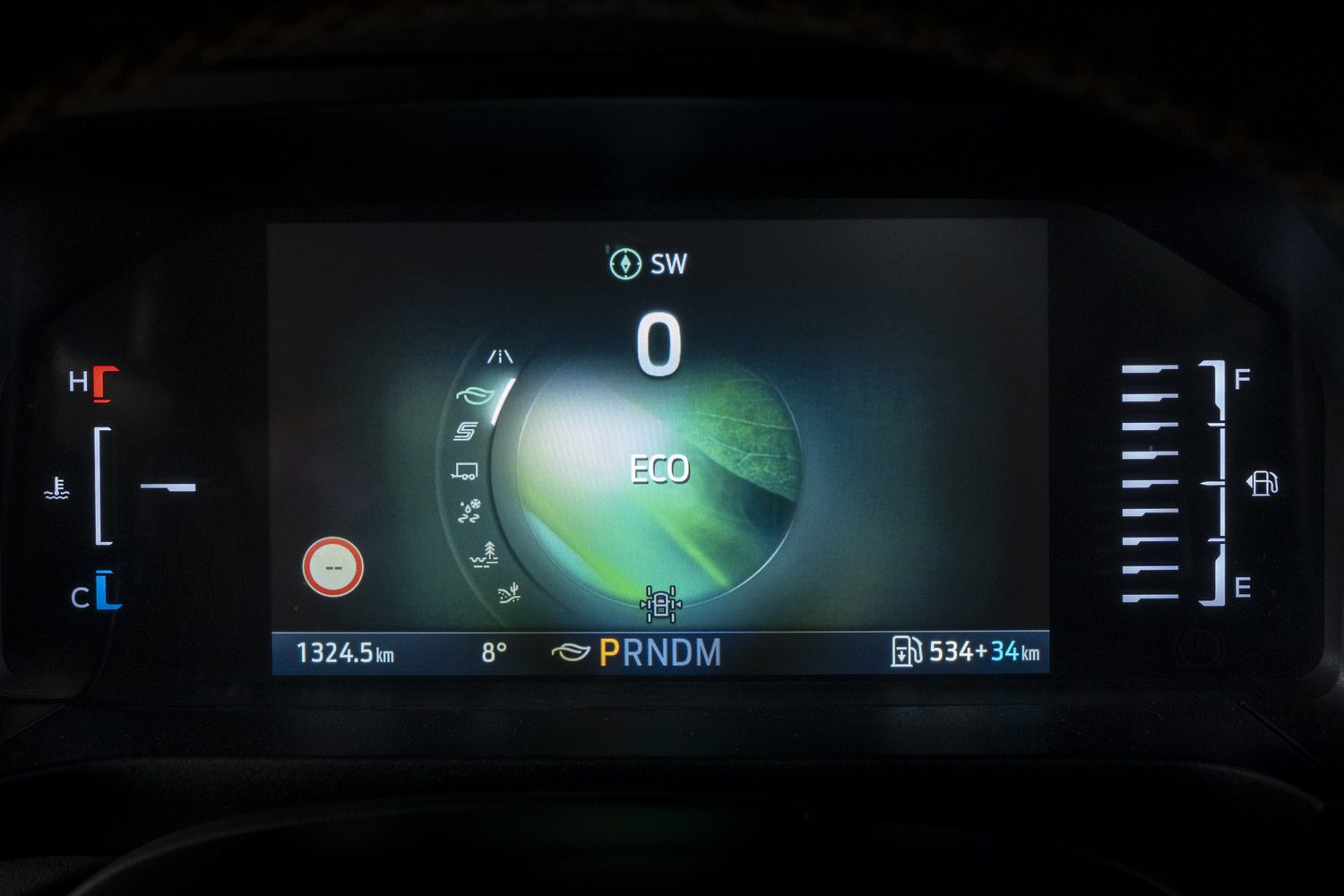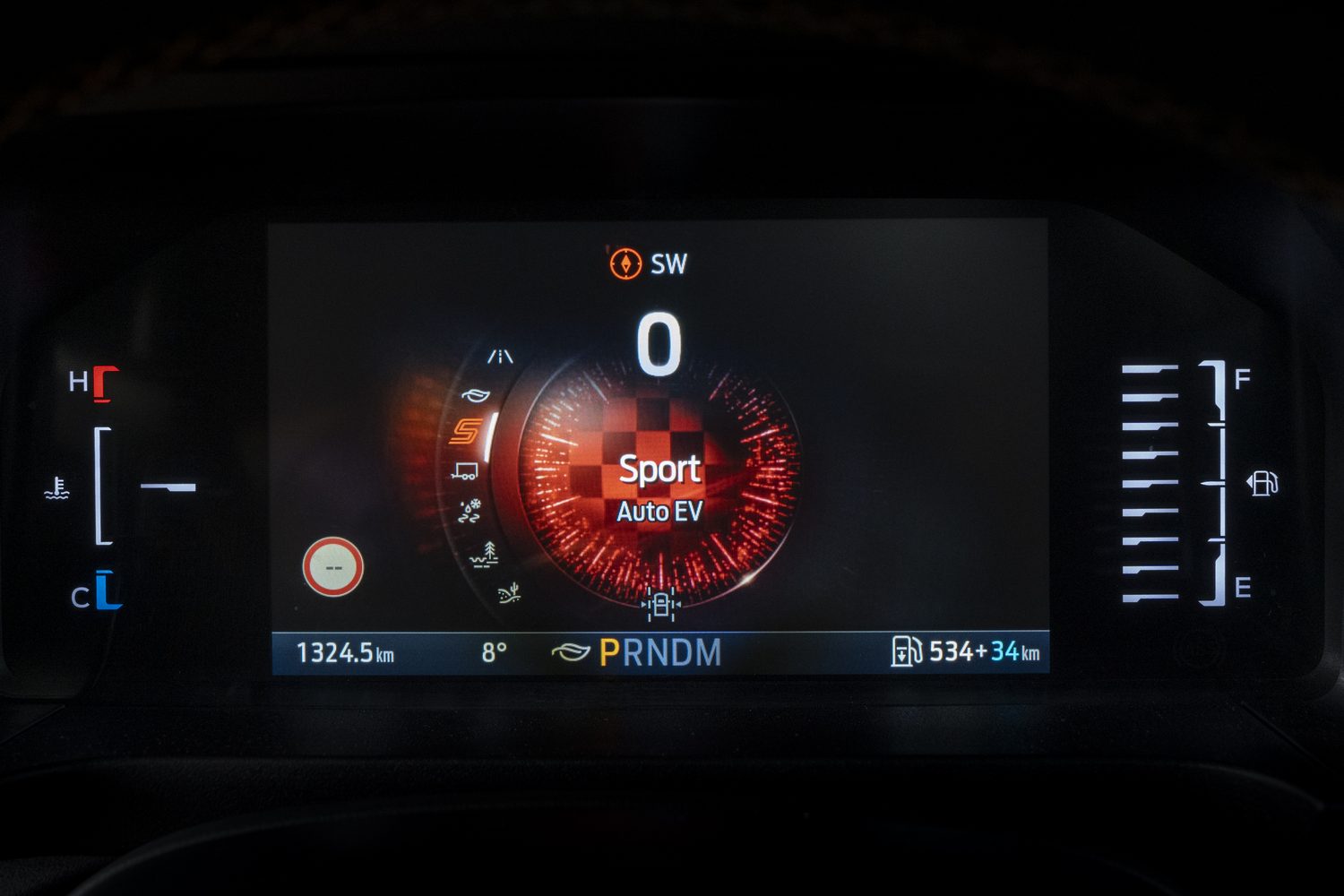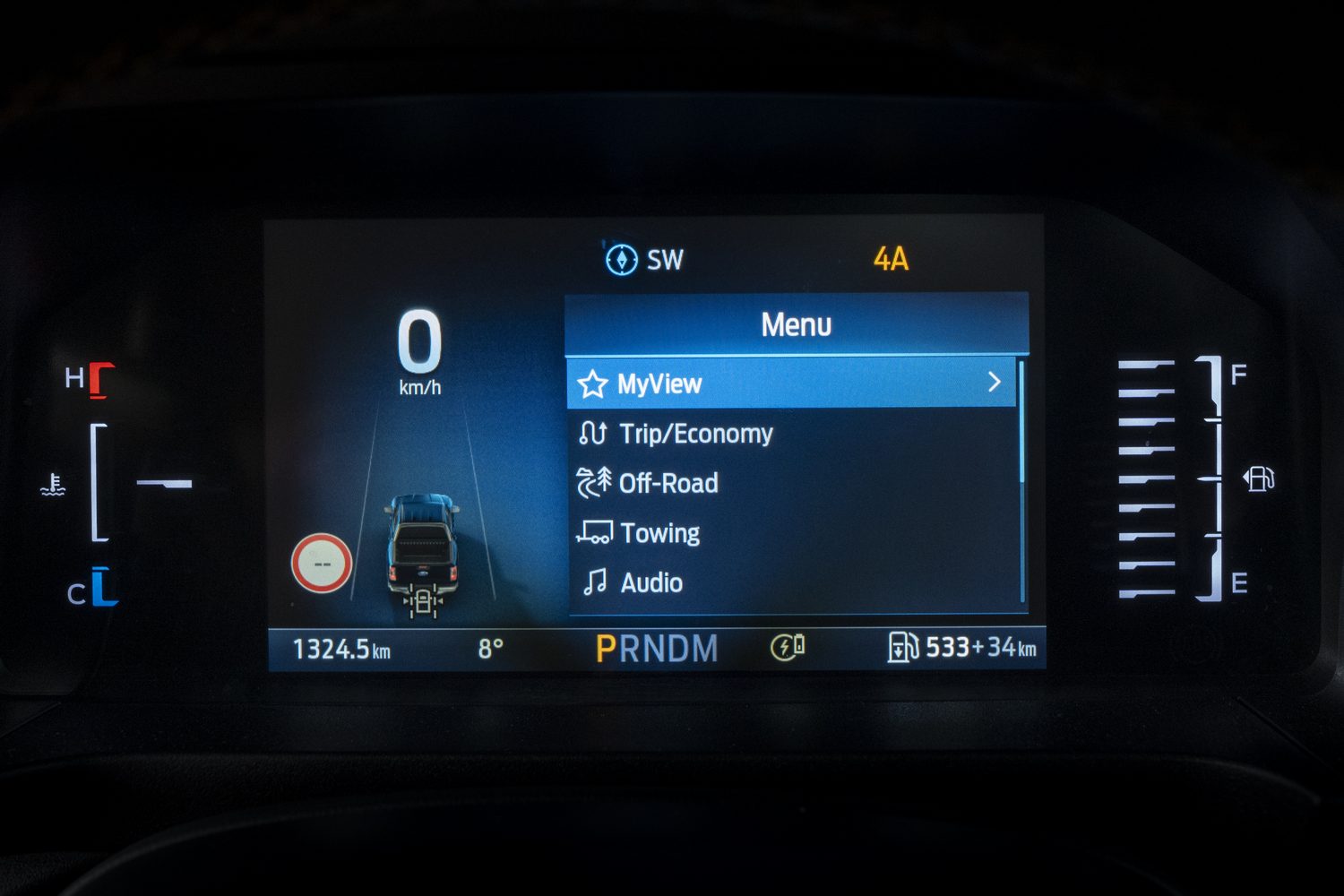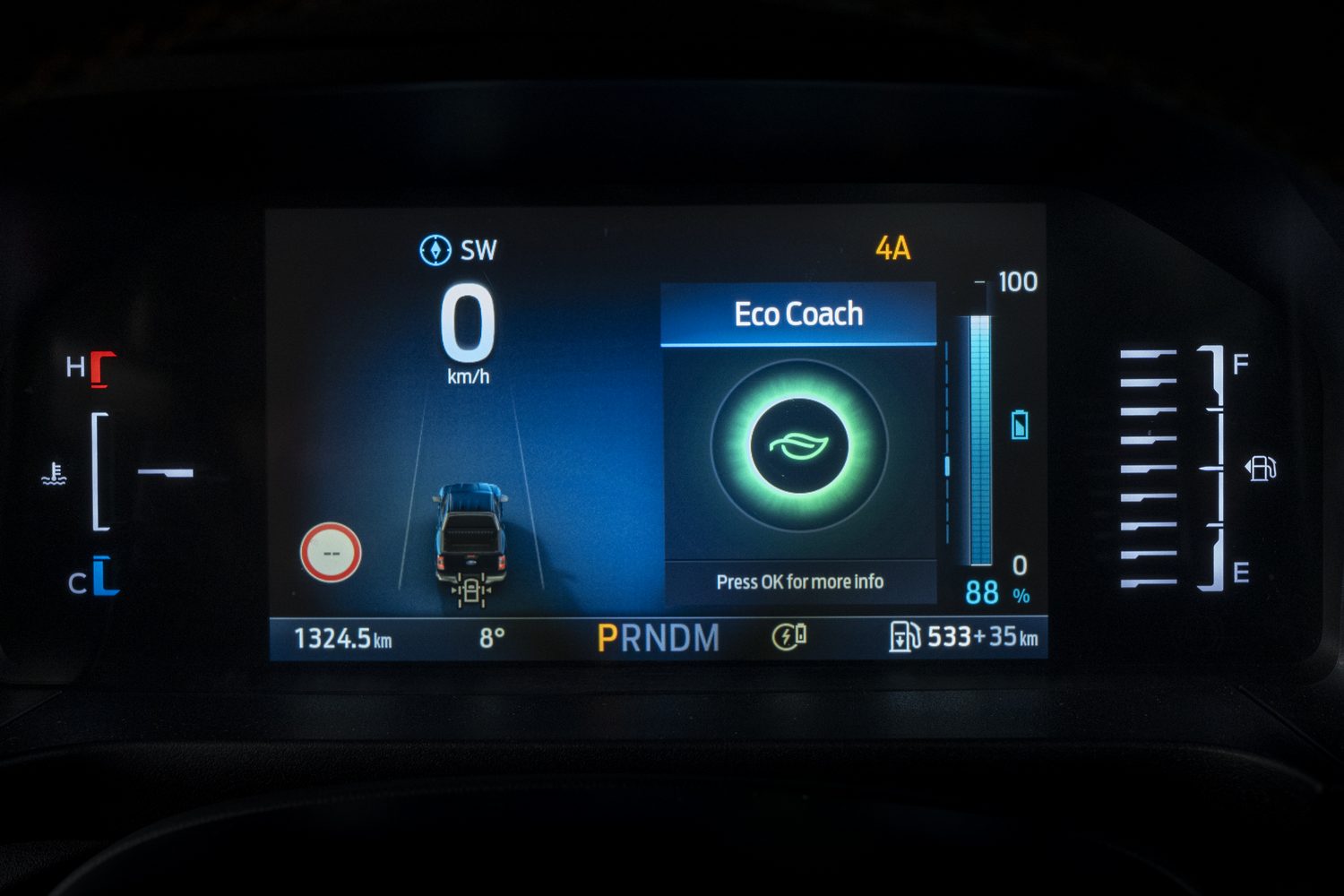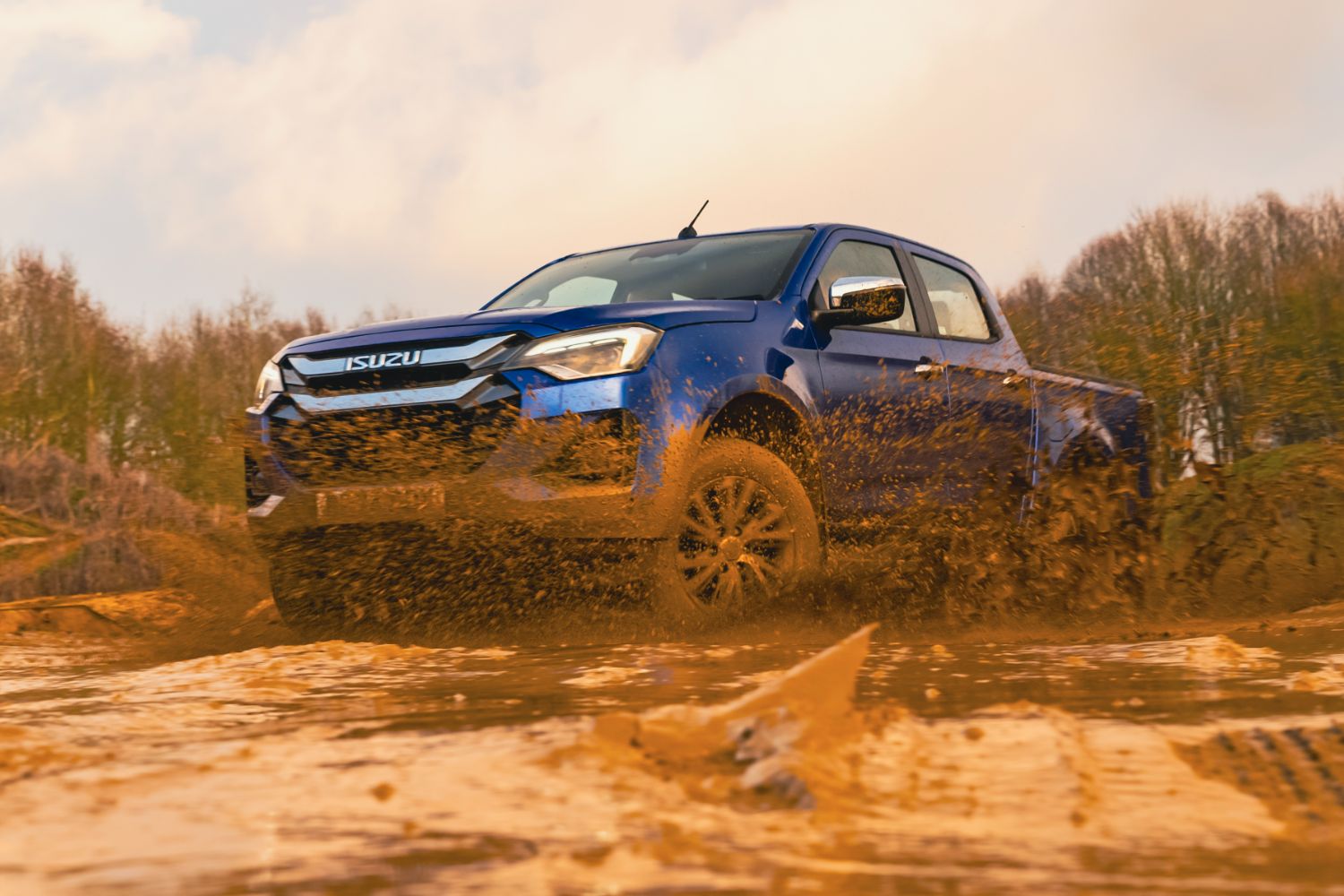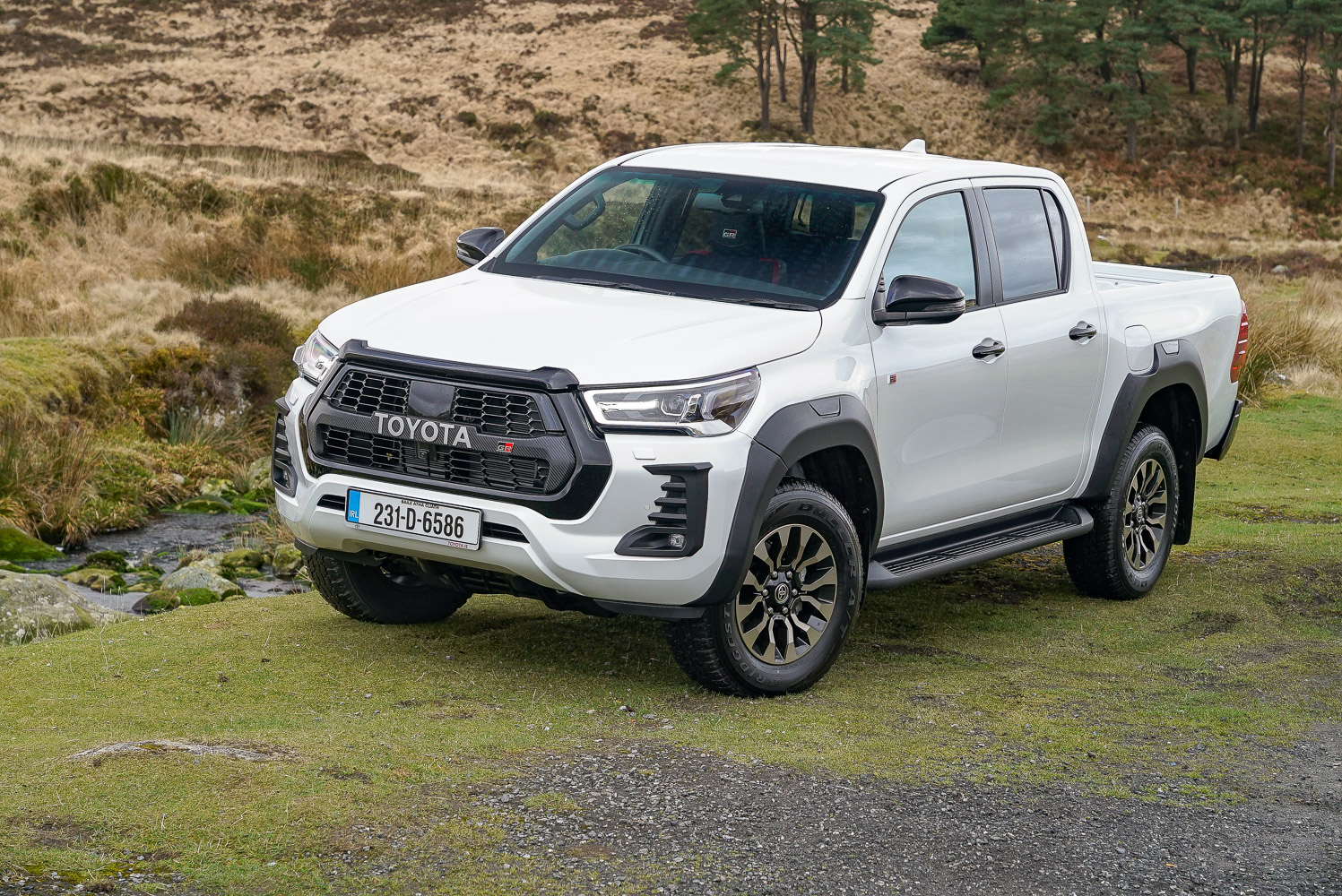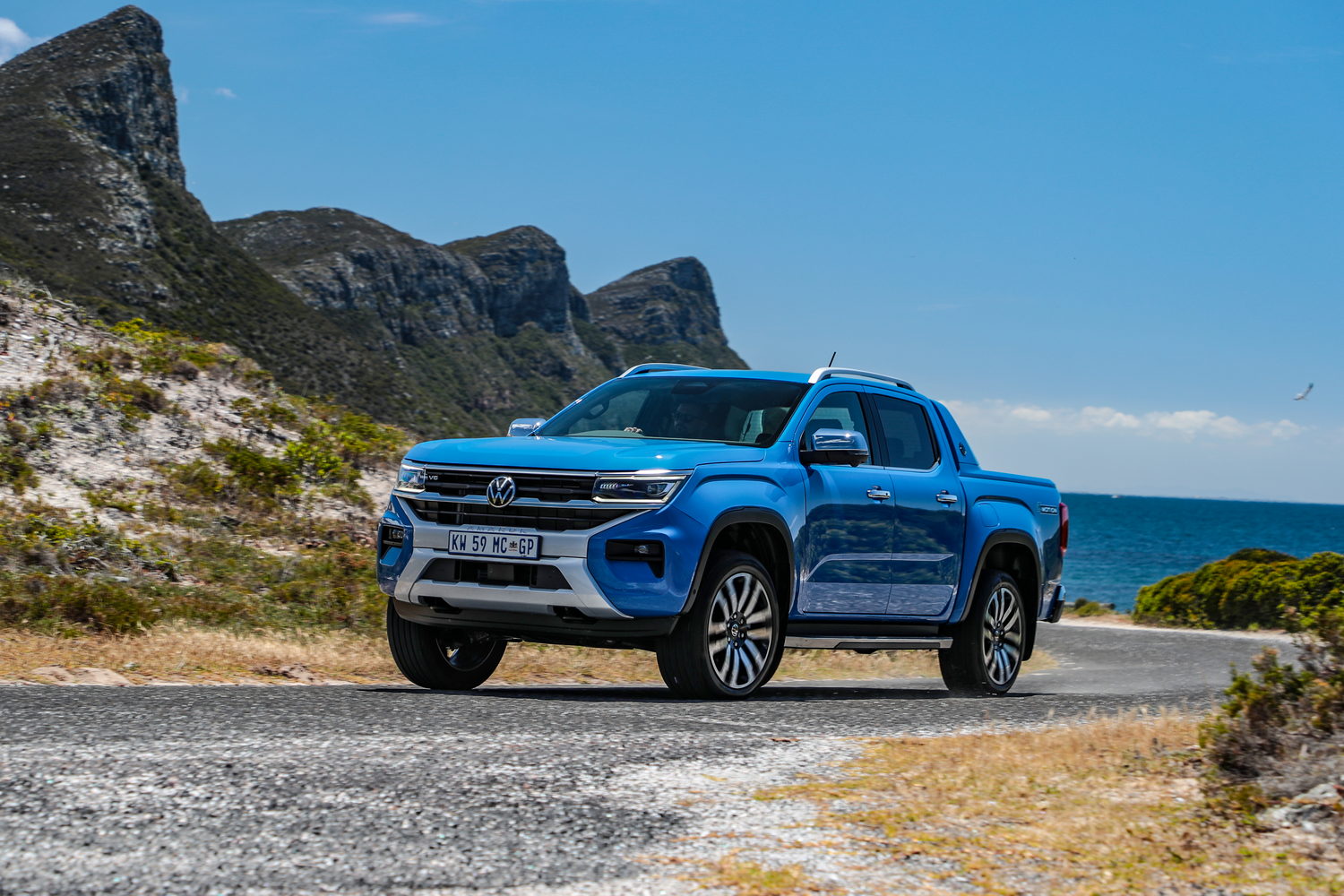Introduction to the 2025 Ford Ranger PHEV
Since its European introduction in 2011 as a fourth-generation model, the Ford Ranger has surged in popularity to become one of the go-to pickups and is consistently at the sharp end of the registration charts. The current (fifth-generation) model was introduced in 2021 and is a global product that Ford sells on multiple continents. Now, there's a plug-in hybrid variant joining the fray.
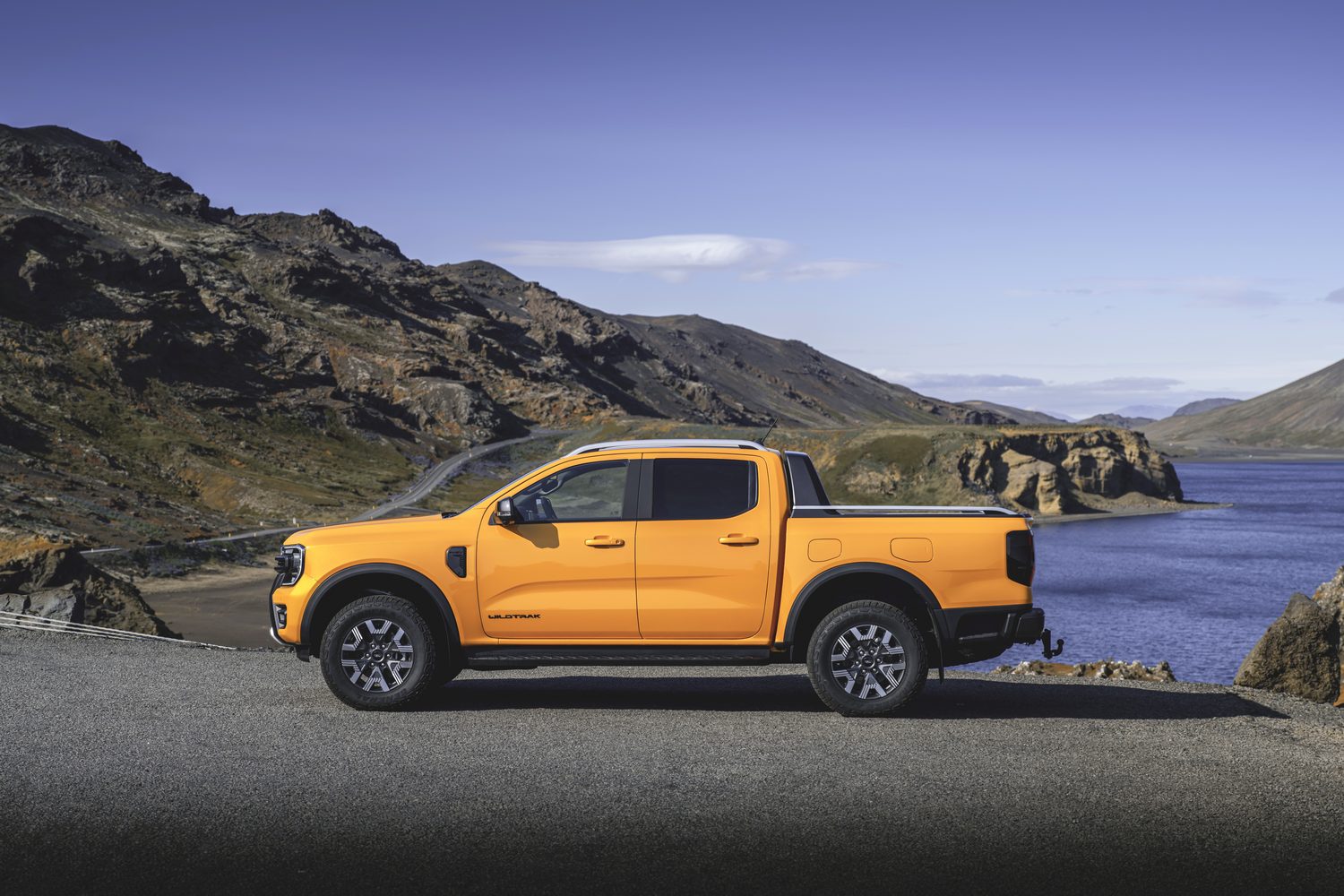
Pros & Cons of the 2025 Ford Ranger PHEV
Pros: Performance, still as capable as other Rangers, potential cost savings
Cons: More expensive than the diesel to buy, lack of PHEV incentives, real-world fuel economy
Exterior & Design of the 2025 Ford Ranger PHEV
• Rugged styling
• Three distinct trim levels
• PHEV only in double-cab

You can purchase the Ford Ranger as a single- or double-cab design, but the former is only available with the base 170hp 2.0-litre diesel engine and six-speed manual gearbox.
The double-cab Ranger line-up starts with the XLT specification, which is more of a functional and basic design that features body-coloured bumpers and 18-inch alloy wheels. The XLT doesn't get roof rails or the 'sports hoop' behind the cab.
The mid-range Wildtrak model is a popular choice as it gets a more rugged appearance by way of a contrasting front bumper with an aluminium scuff bar and a more pronounced honeycomb grille.
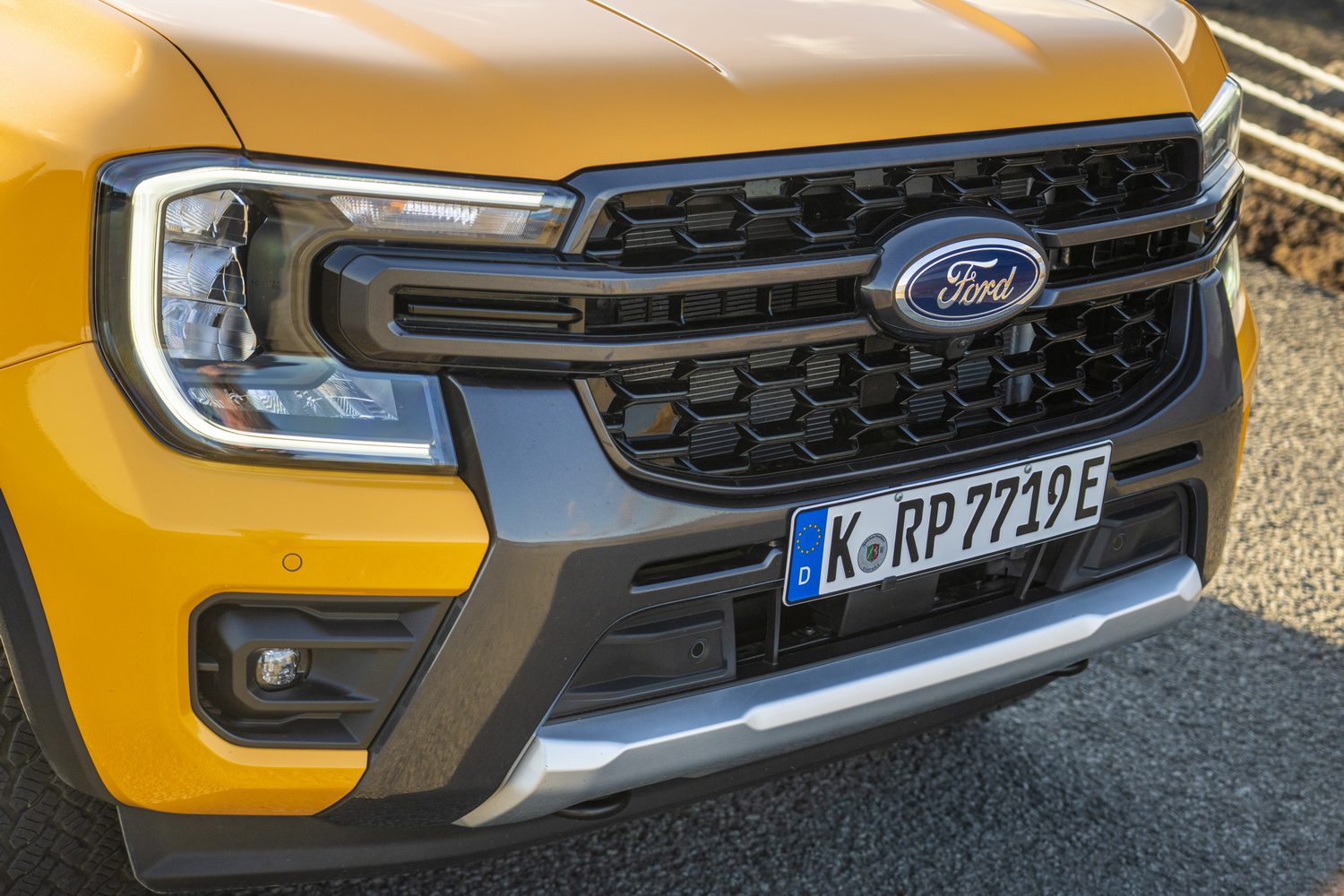
Wildtrak badging along the lower section of the doors highlights the model and there's subtle PHEV branding on the wing insert, too.
Aluminium roof rails are complemented by additional rails along the side of the load bed, and the Wildtrak gets a black sports hoop. The PHEV version gets a specific 18-inch alloy wheel design.
Ford also offers a range-topping version called the Stormtrak. In addition to the Wildtrak specification, the Stormtrak is available with two exclusive colours: Chill Grey and
Agate Black.
Other standard features include a unique grille design with the Ranger wordmark across the bonnet's leading edge and LED matrix headlights. It rides on 18-inch matt-black wheels that are exclusive to the Stormtrak and in addition to the sports hoop, it gets a rear racking system and larger black roof rails.
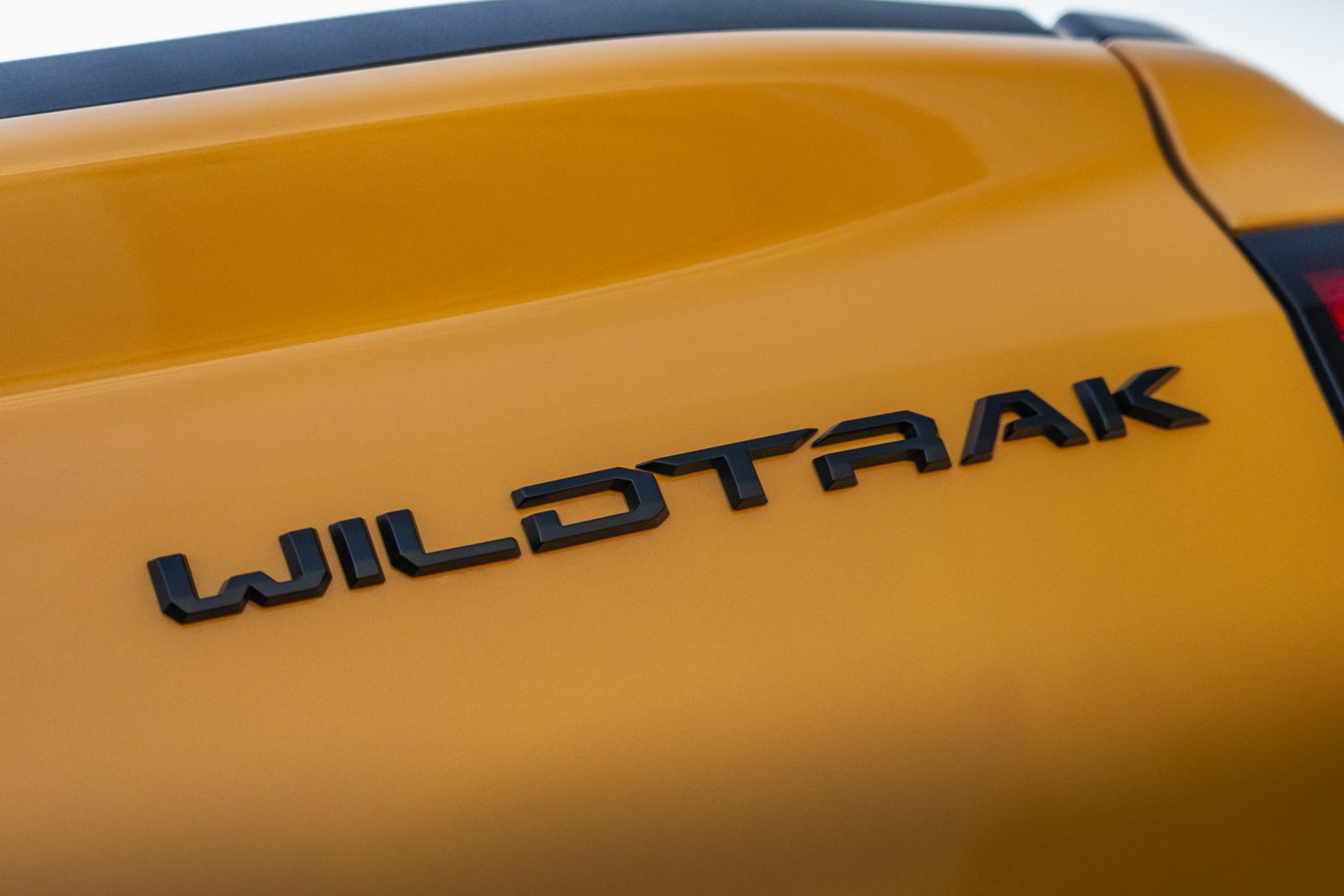
For reference, the key exterior dimensions for the Ford Ranger PHEV are:
Length: 5,350mm
Width: 1,924mm, (2,207mm including the door mirrors)
Height: 1,871mm
Wheelbase: 3,270mm
Interior, Practicality, Tech & Safety of the 2025 Ford Ranger PHEV
• Can tow up to 3,500kg
• 12-inch portrait display
• Spacious interior
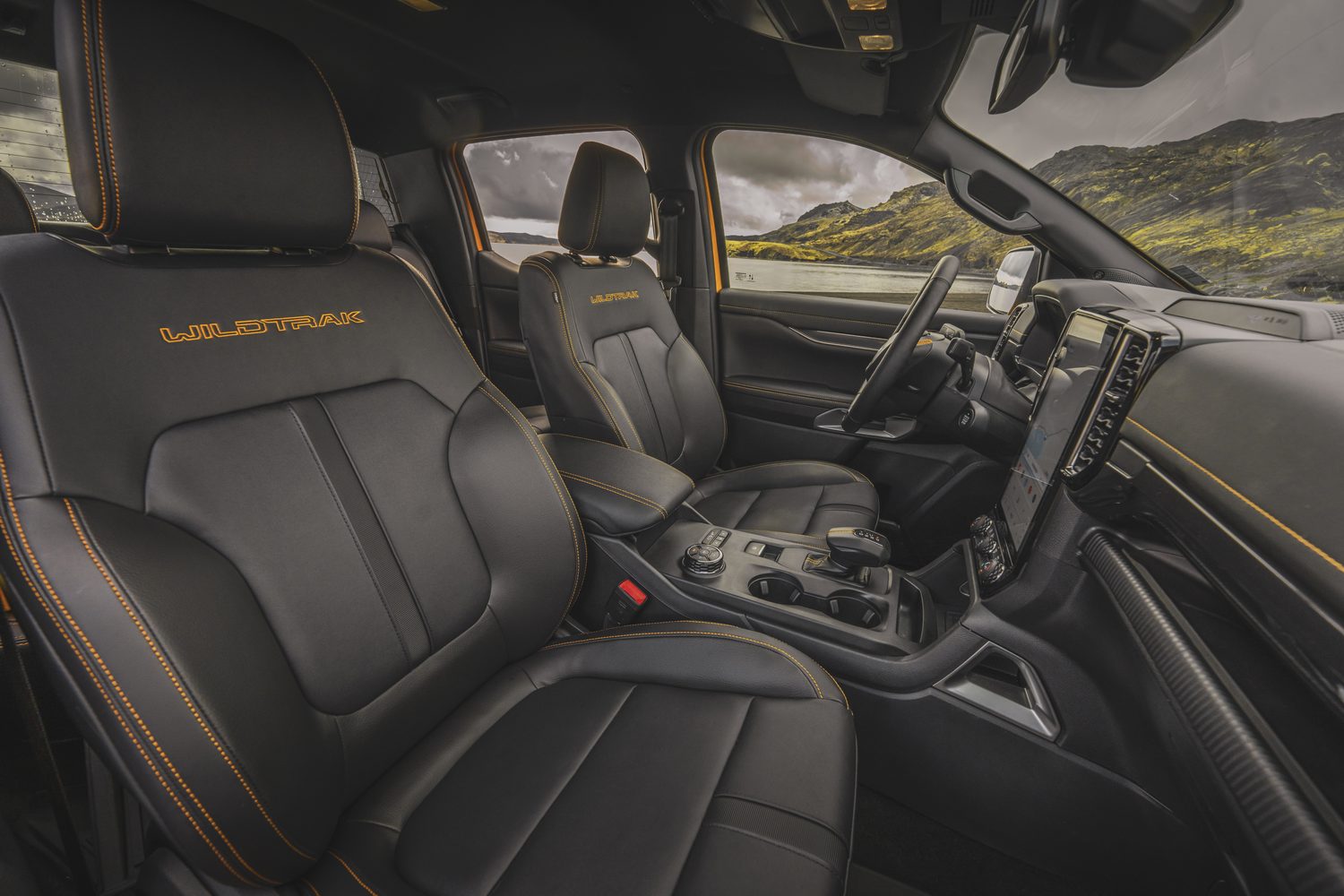
With ground clearance of 215mm, there is a bit of a step up into the Ranger's cabin, but this is made easier thanks to running boards along the side and chunky handles on the inner sides of the A-pillars.
Once seated it's easy to get into a comfortable driving position. The multifunction steering wheel is manually adjustable for reach and rake over a broad range and the driver's seat is electrically adjustable, too.
The Ranger's cabin looks modern and feels spacious thanks to the layout of the dashboard, which appears tall. The eight-inch digital instrument display is configurable, and you can always see the most essential information including state of battery charge and overall driving range remaining. The leather-covered steering wheel features chunky physical buttons on it, which we approve of.
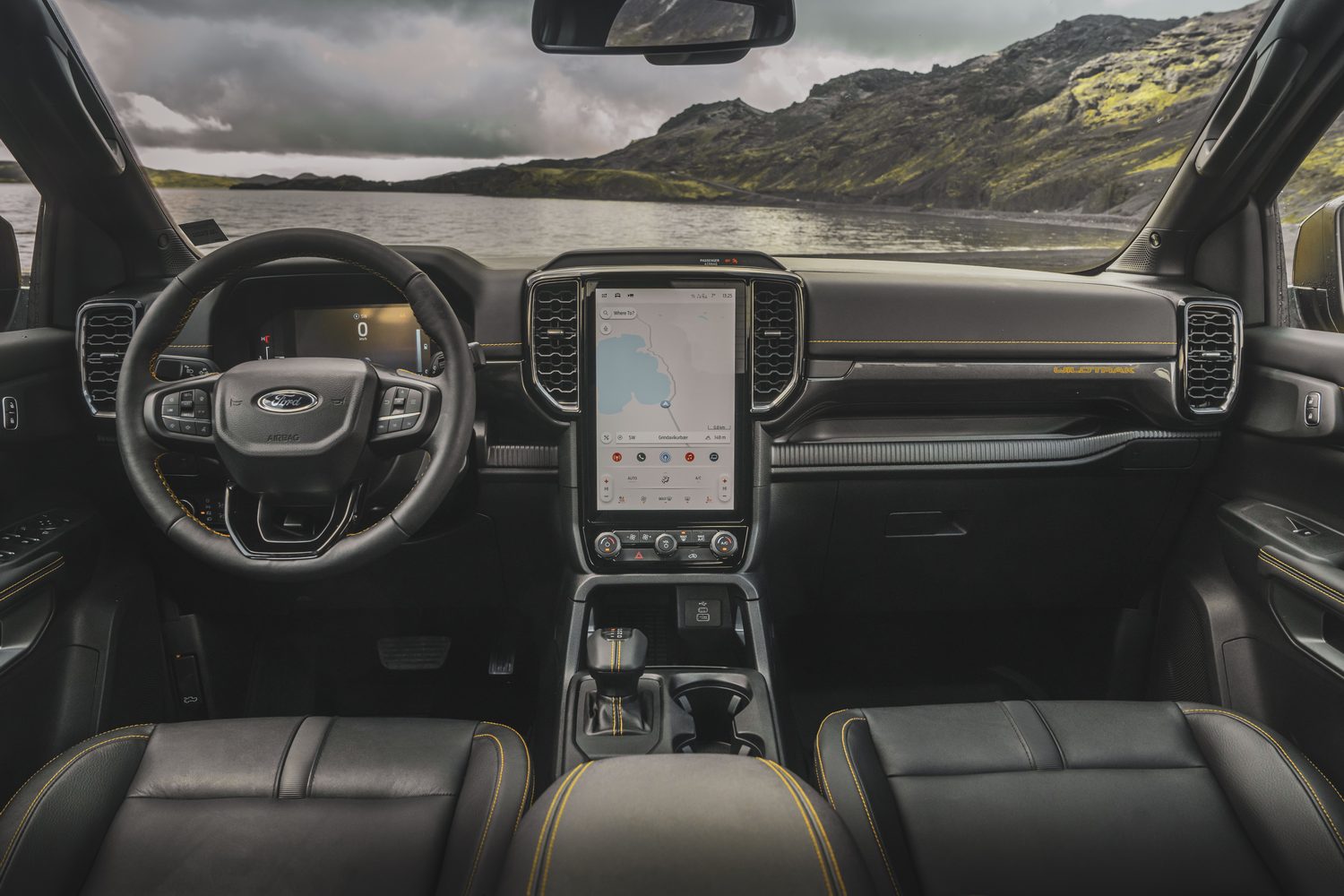
Honeycomb air vents sit either side of the 12-inch portrait touchscreen that runs Ford's latest SYNC operating system. The native setup is quite easy to use and navigate, but equally useful is the availability of smartphone mirroring for Android Auto and Apple CarPlay.
It's possible to adjust the cabin temperature via the screen, though we commend Ford for also fitting physical controls below the display for the same purpose. There's also a volume dial at the centre.
Keeping your phone charged up is easy too, thanks to a wireless charging pad, USB ports and a 12-volt power outlet all nestled below the central display.
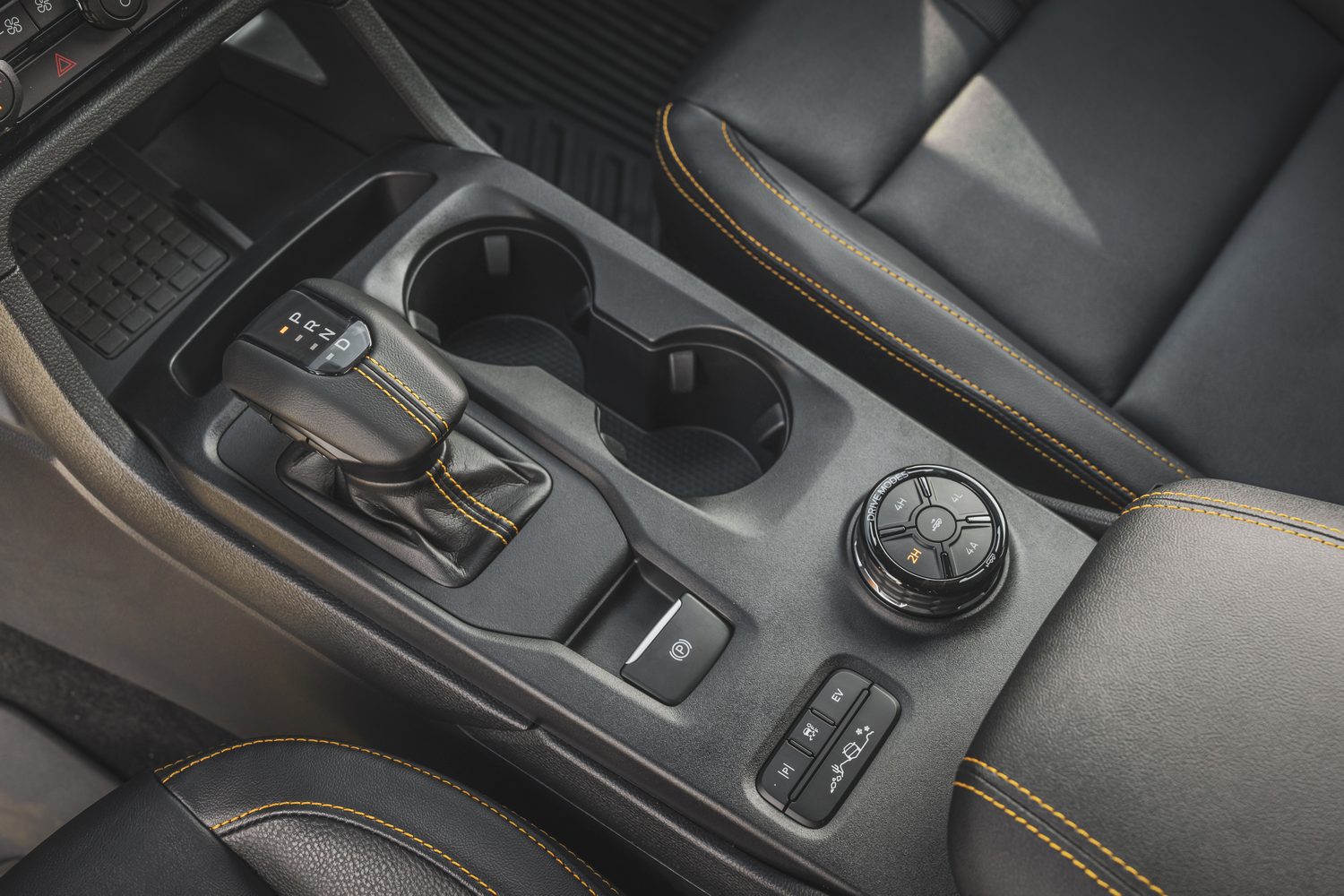
Rear passengers also get plenty of space in the Ranger, though the second-row seats aren't quite as comfortable as those up front. The two outer rear seats are equipped with ISOFIX child mounting points, adding to the Ford's practicality.
The Ranger PHEV has an 11.8kWh lithium-ion battery that sits just below the cargo bed. As a result, the floor of the load bed is slightly raised, by around 20mm in comparison to the diesel Ranger.
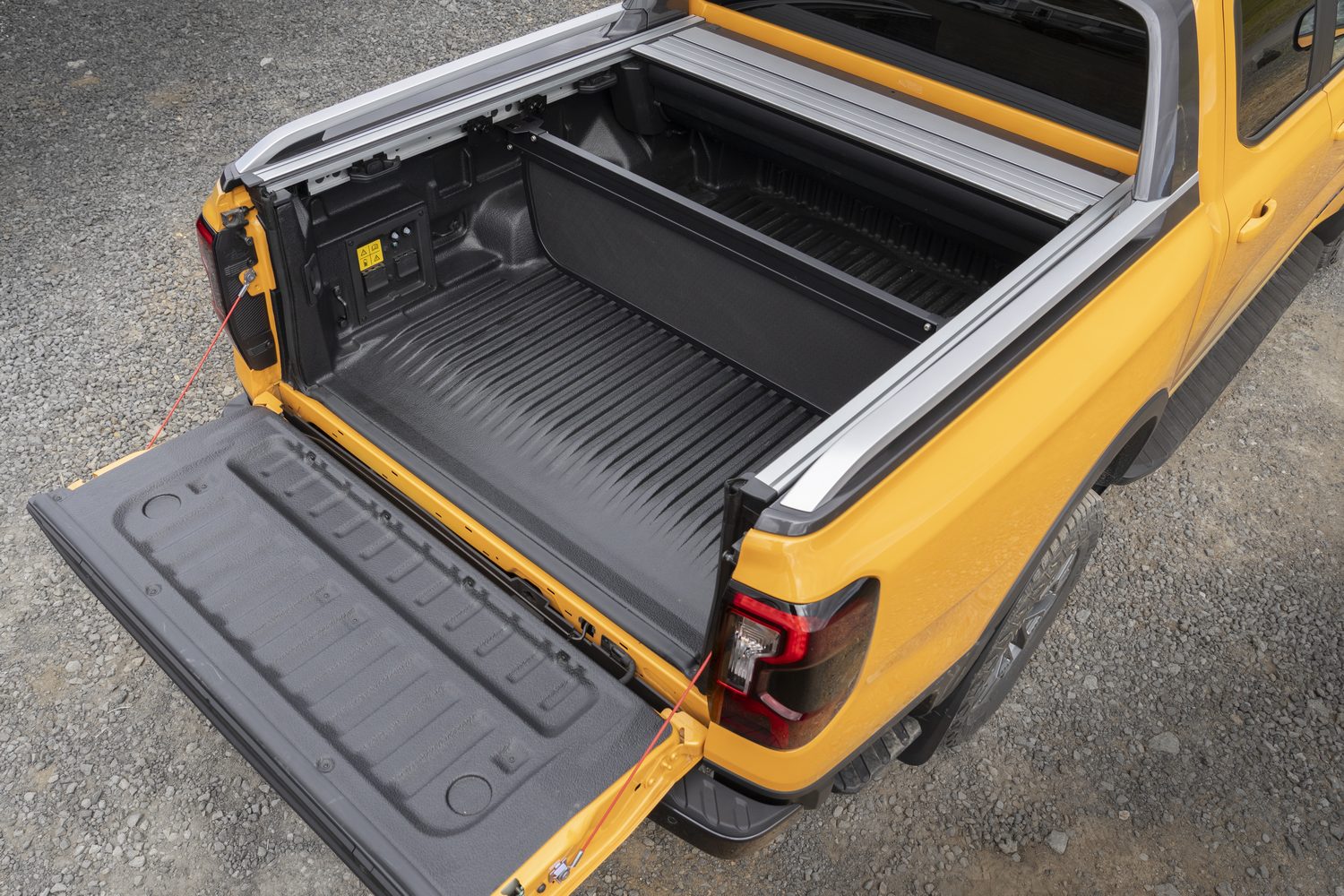
The bed's other dimensions are unchanged: 1,224mm between the wheel arches and 1,638mm in length. The cargo bed's load capacity is 993kg in the XLT and 940kg in Wildtrak and Stormtrak variants.
Performance of the 2025 Ford Ranger PHEV
• 10-speed auto is smooth
• Can act as an on-site generator
• Capable off-road
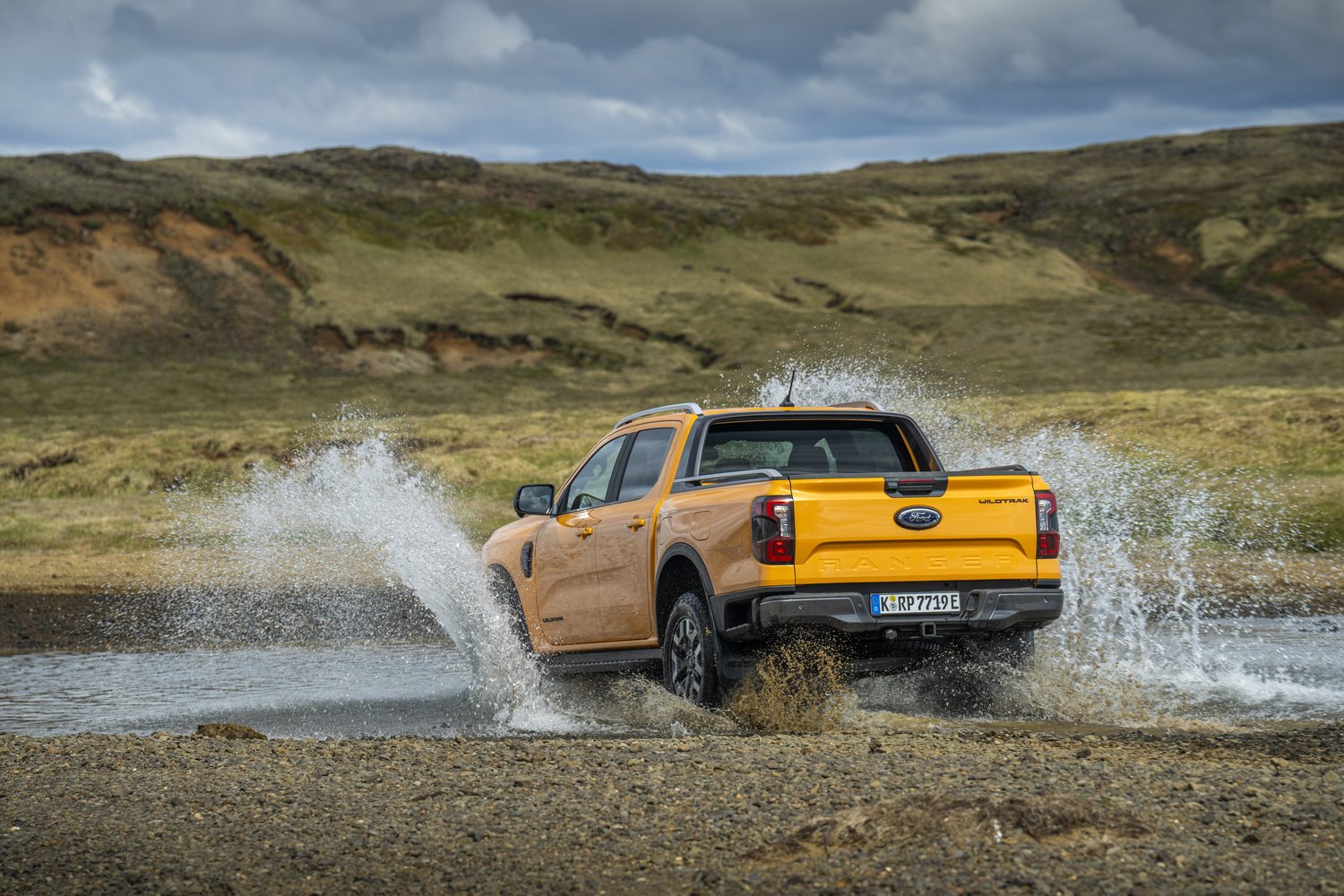
In adding a plug-in hybrid powertrain to the Ranger, Ford has been mindful to not have it detract or diminish the pickup's overall performance. In fact, the combination of a 2.3-litre EcoBoost petrol engine and 75kW electric motor producing a combined 281hp makes this the most powerful Ranger after the 292hp Ranger Raptor.
That 2.3-litre unit already does service in the US version of the Ranger and Ford's engineers have integrated the electric motor between it and the transmission's input shaft, meaning that the Ranger PHEV retains two- and four-wheel-drive capability regardless of which is driving the vehicle, alongside low- and high-range drive.
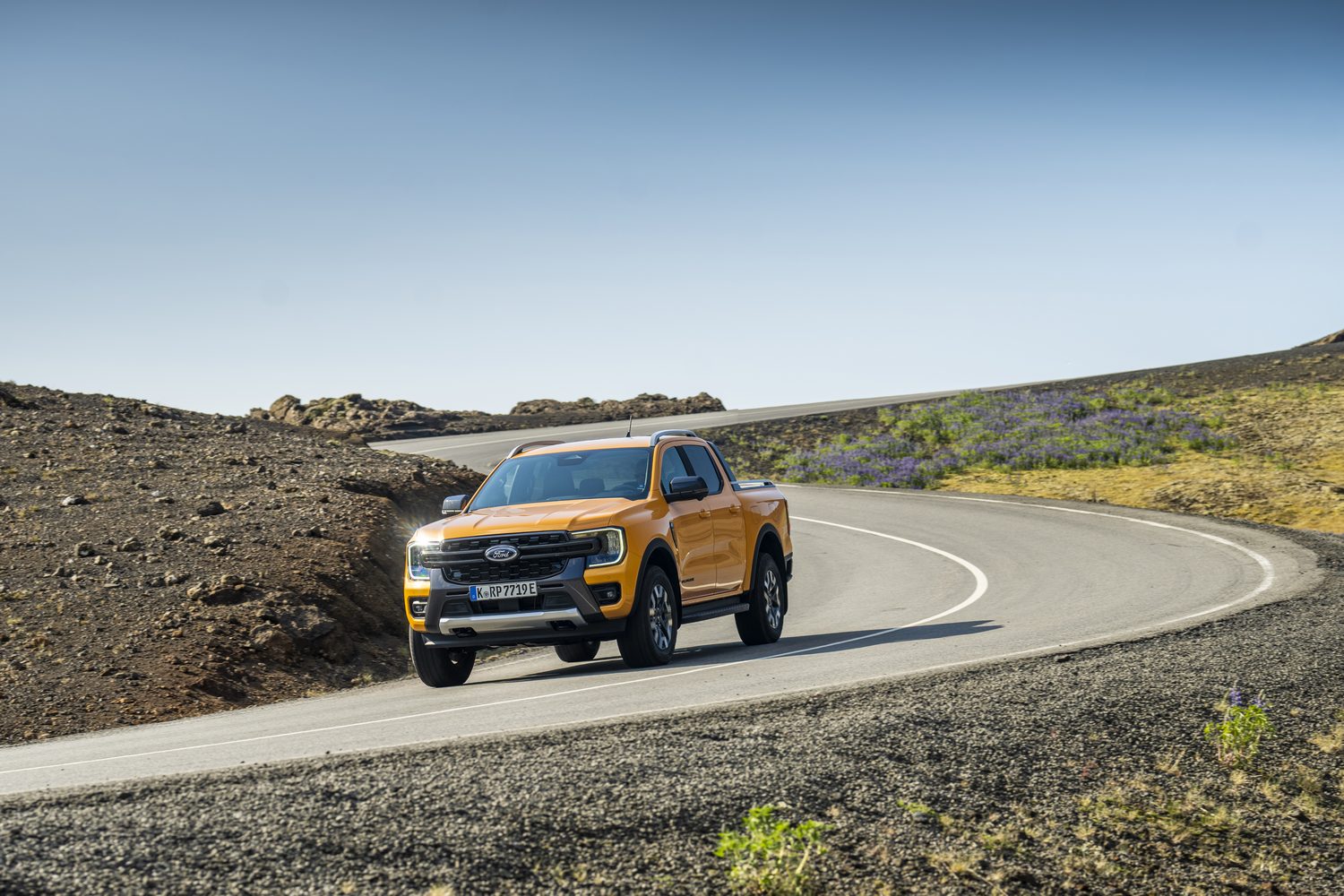
An 11.8kWh battery provides enough energy storage for up to 43 kilometres of electric driving in WLTP conditions. Drivers can choose how and when to use that electric power, thanks to four EV modes. With EV Now selected (via a small button on the centre console), the Ranger will start and continue driving in solely electric mode.
An EV Auto function lets the car's brain decide which motor to use according to a number of factors, while EV Later stores the current state of battery charge for later in the journey.
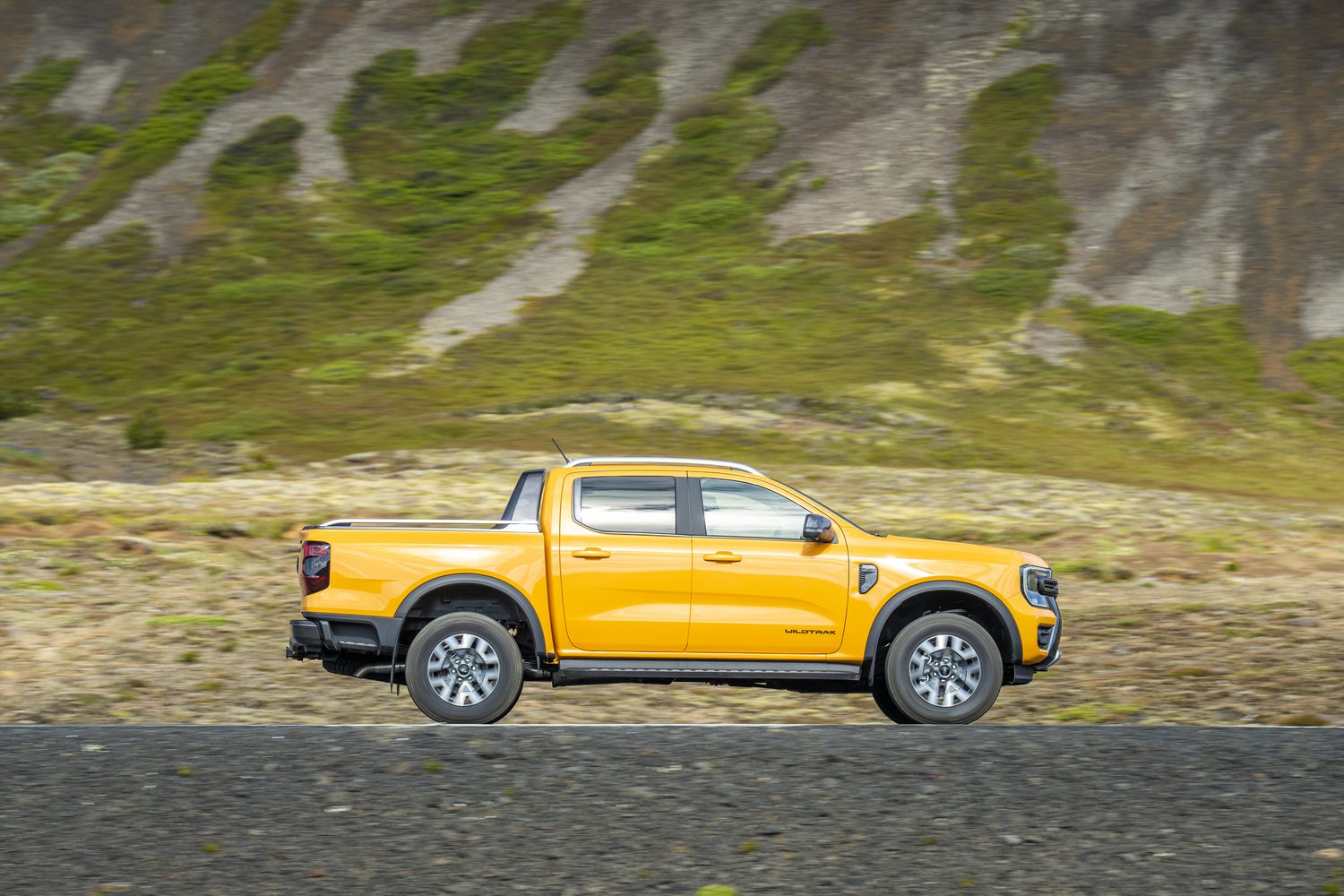
Ford does offer the option to use the petrol engine to generate power to recharge the battery. Typically this is a very inefficient way of doing so, but this is useful for when the battery is needed for the Pro Power Onboard system. That setup allows for external equipment to be powered directly from the high-voltage battery with a 2.3kW output as standard and optionally up to 6.9kW.
Despite the marginal weight increase of having a high-voltage battery onboard there are almost no changes to how the Ranger PHEV drives. The suspension has been adjusted for the weight but there is no discernible difference in how it feels on the road.
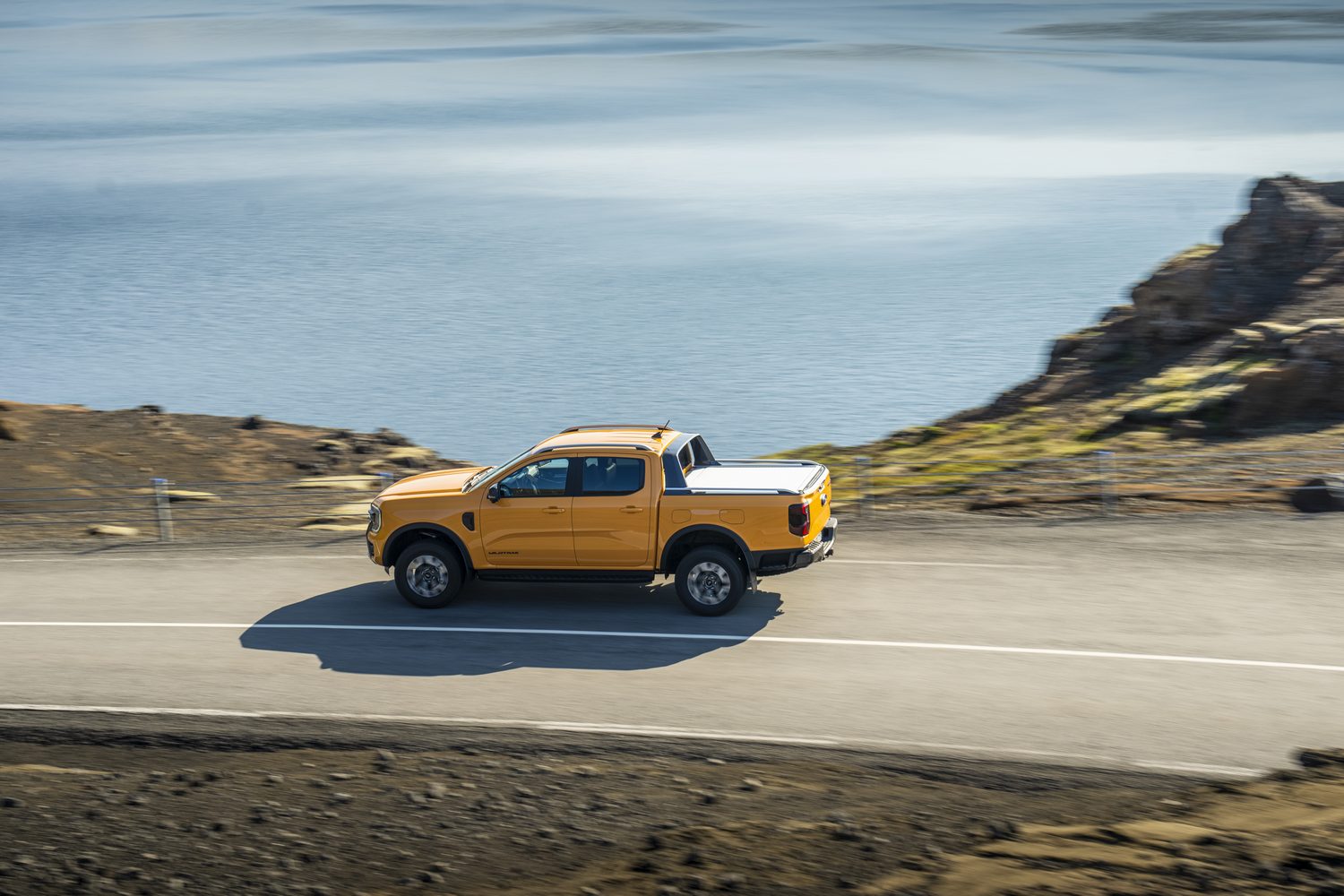
Having the electric motor and its ability to provide ultra-smooth torque delivery from the outset does make the experience smoother when accelerating, and when driving on low-load scenarios across flat terrain it's difficult to detect when the 10-speed automatic is shifting gears.
When running in EV mode it's noticeably quiet save for some rumble from the all-terrain tyres that were fitted to our test vehicle. Switching between motors on steady throttle is nicely polished, with no jerks as it transitions.
The ride comfort is better than that of some other pickups, even without any weight in the rear bed. The steering is comfortably light too, without feeling over-assisted, so you can always tell with a degree of precision what the front wheels are doing.
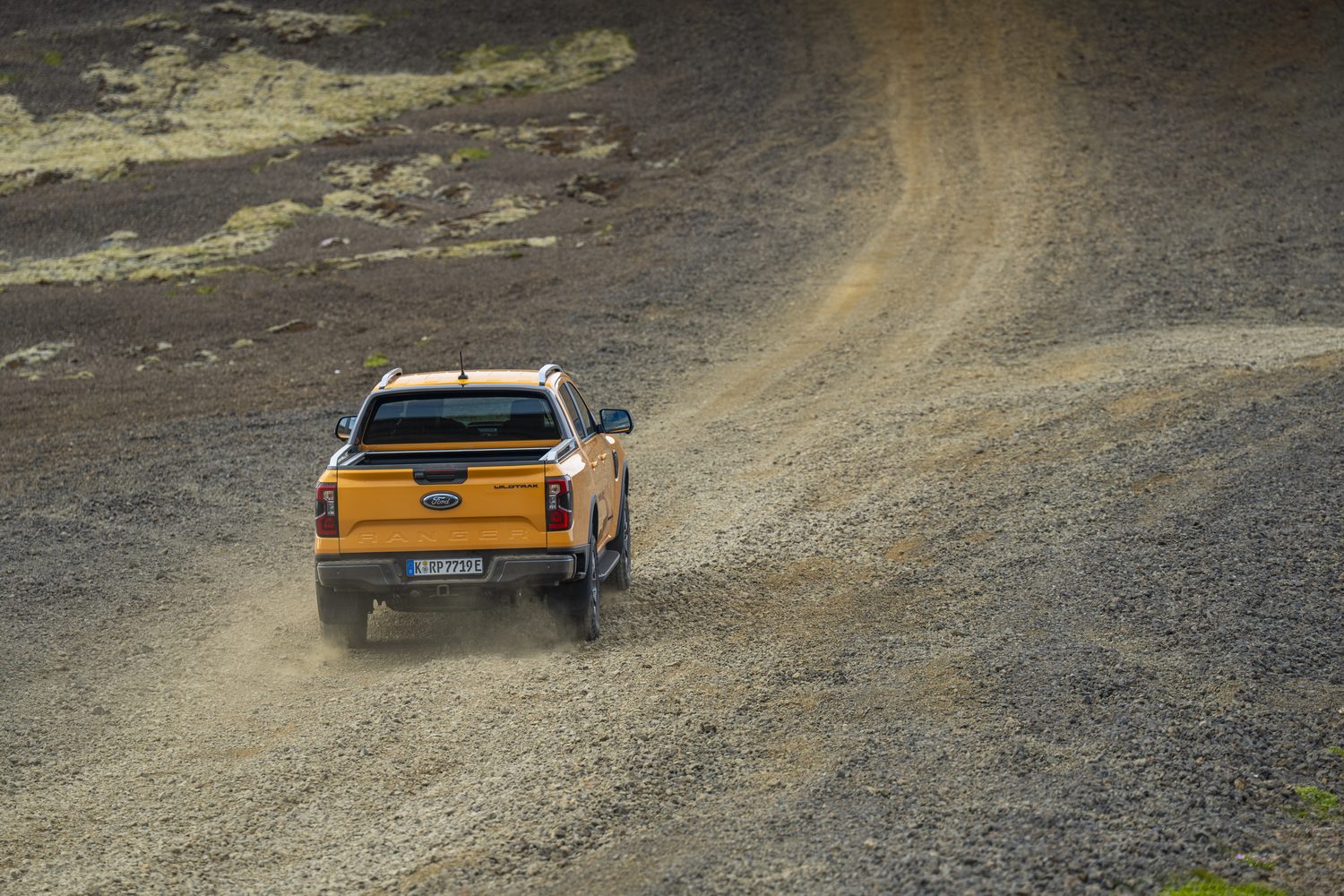
That's especially important if you plan on taking the Ranger PHEV off-road, something it's rather adept at. One big plus is that, due to how that electric motor is integrated in the driveline, you can go fully off-road in electric only mode.
When you need more oomph, the petrol engine has no shortage of torque on demand - the system's combined peak output is 697Nm - and with approach and departure angles of 30.2 and 24.2 degrees respectively, the Ford is able to tackle most terrain you're ever likely to feel like taking on. Along with a 20.4-degree breakover angle, the Ranger PHEV can wade up to 800mm in water.
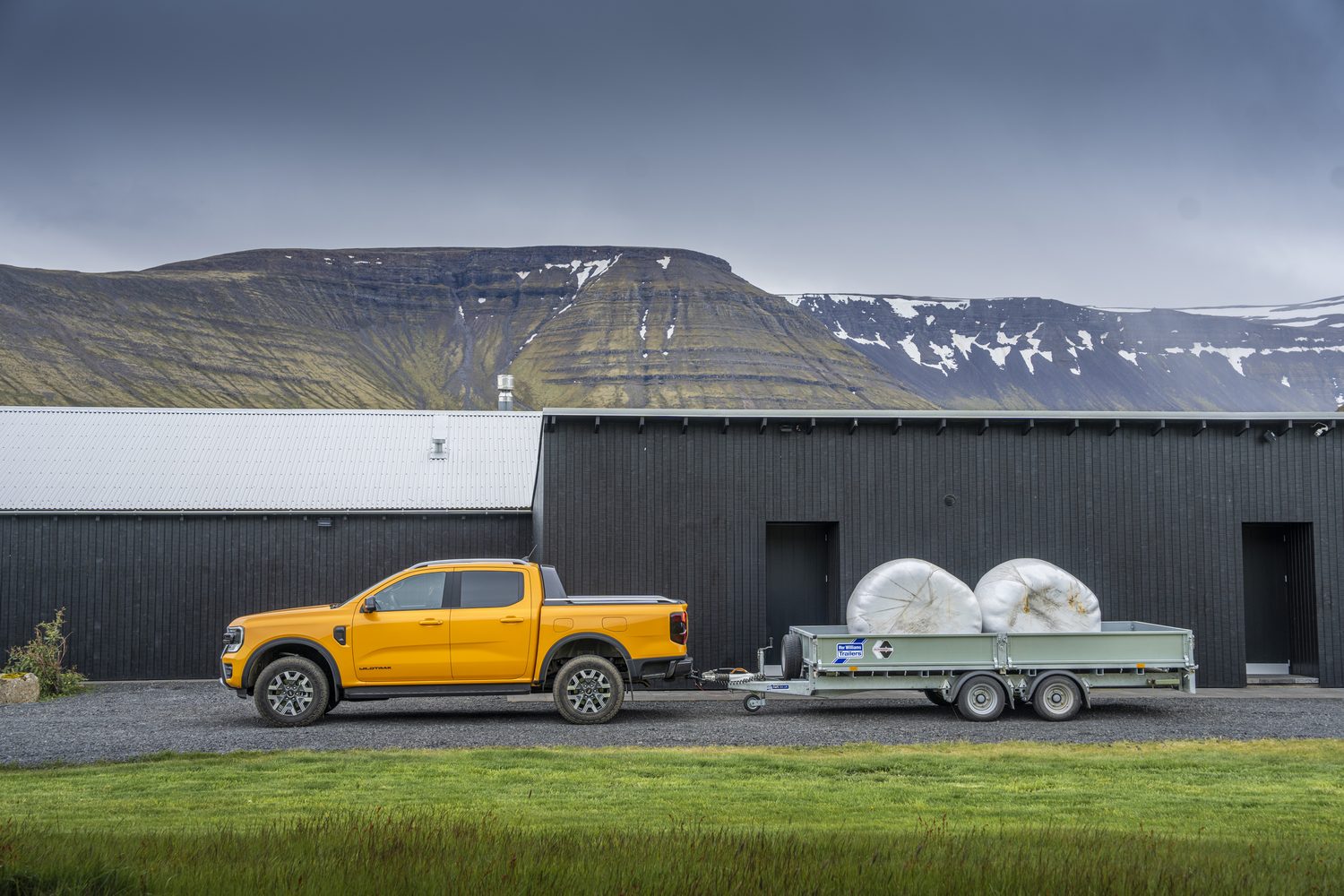
Shifting between high and low range is simple once stationary and there are numerous drive modes that are also selectable from the rotary controller positioned on the centre console between the front seats. It is an intuitive system to use, so even for the novice off-roader the technology onboard supplies plenty of confidence.
Running costs of the 2025 Ford Ranger PHEV
• Can charge in under four hours
• Useful electric driving range
• Taxation issues in Ireland
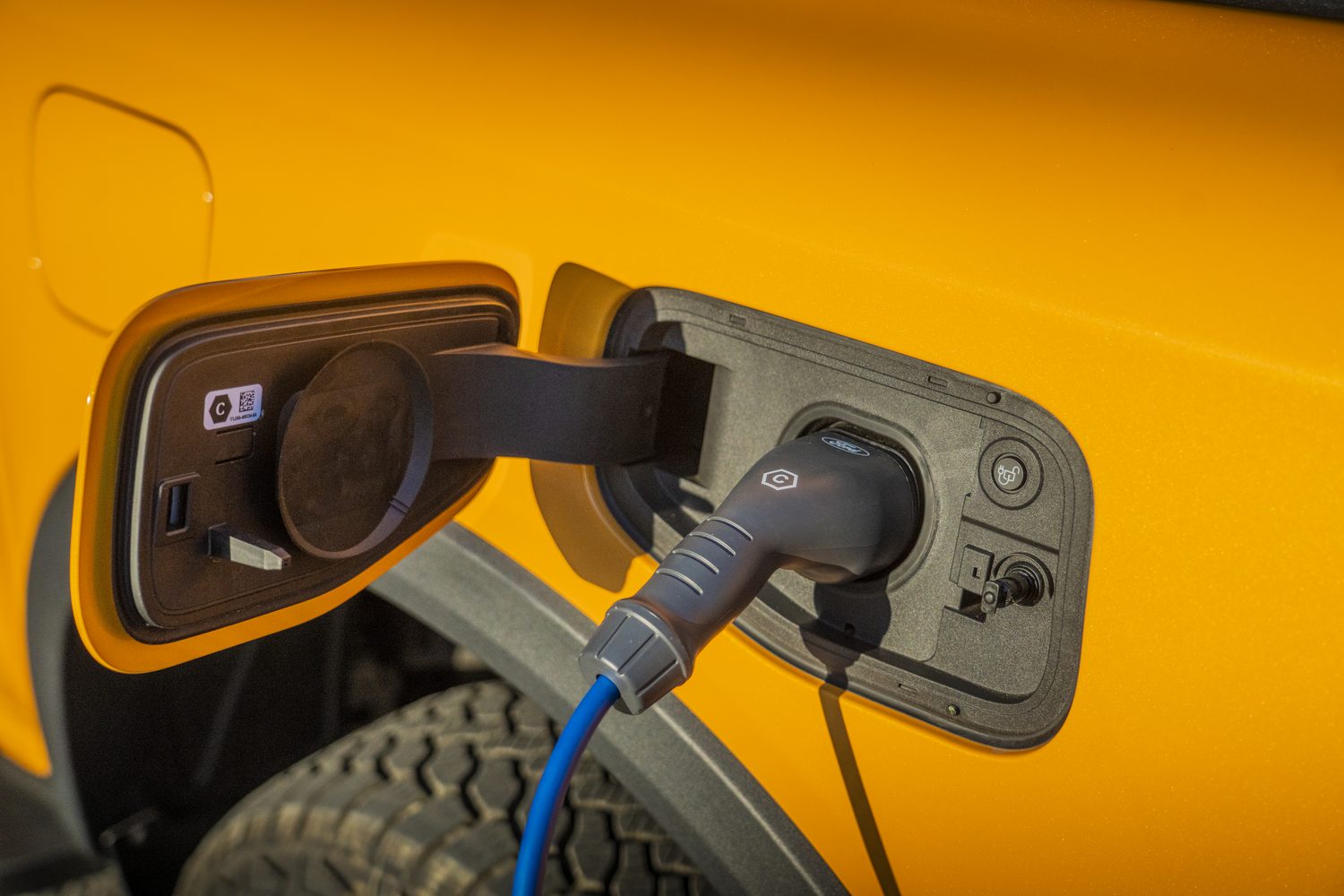
Obviously, like all plug-in hybrids, the potential running cost savings can only be achieved for the Ranger PHEV if you keep that battery charged up - and not via the engine.
Ford says from a typical 16A outlet the battery will be fully charged in less than four hours and that can then provide up to 43 kilometres of electric-only driving. We achieved slightly less than that during our time driving the Ranger PHEV, but it wasn't far off.
Ford says that according to its data - from all of its Ranger fleet being operated by the public - a 43-kilometre figure would be enough to cover around half of all daily Ranger journeys.
That could be good news to those looking to reduce their tailpipe emissions, though it is worth noting that in Ireland there aren't many benefits to encourage buyers to switch away from diesel. There are also no PHEV incentives for VRT and nor is there a method to reclaim VAT on petrol, whereas there is with diesel.
Irish Pricing & Rivals of the 2025 Ford Ranger PHEV
• One of the few PHEV pickups
• Top-spec Stormtrak is expensive
• Lack of government incentives is a roadblock
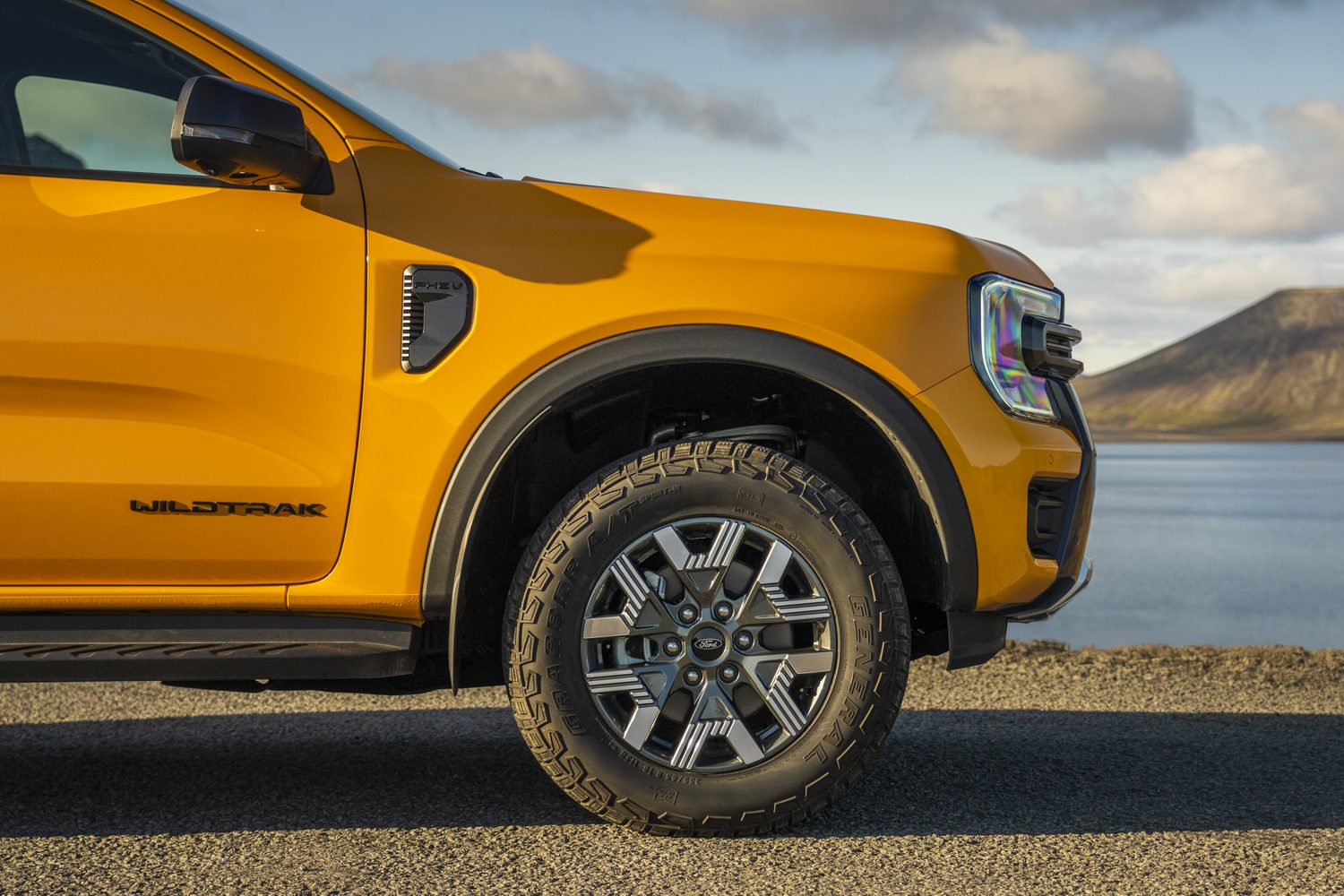
Pricing for the Ford Ranger PHEV in Ireland starts at €62,458 including VAT for the XLT version. In comparison, the same-spec Ranger diesel costs €49,868.
The Wildtrak model is the mid-point in the range and the one that is likely to be the most popular; it costs €69,452. The range-topping Ranger Stormtrak is €78,194.
There are plenty of other pickups available, though the Ford is currently the only plug-in hybrid pickup on sale in Ireland. Toyota is introducing a 48-volt mild-hybrid variant of its diesel Hilux which is also available in single- and double-cab layouts and comes in a variety of specification grades. Volkswagen's Amarok is built on a shared platform with the Ranger, though as yet there are no plans to add a PHEV variant to its offering.
Verdict - Should You Buy the 2025 Ford Ranger PHEV?
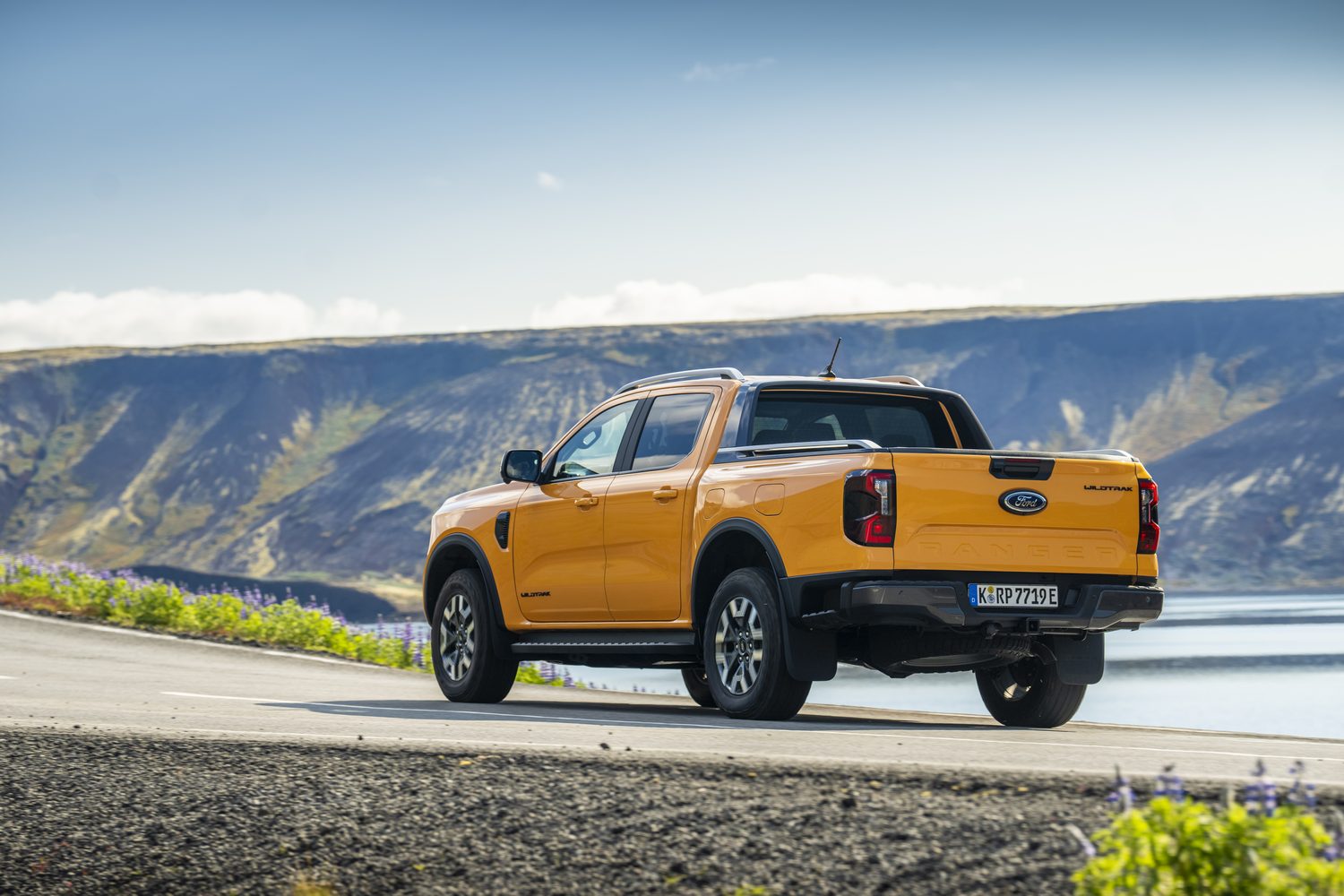
The Ford Ranger PHEV is a quite complete package and there is some appeal to being able to utilise the hybrid portion of its setup. However, the lack of any real incentives from a governmental perspective makes it a harder purchase to make as it not only costs more to buy but has fewer benefits from longer term business-related ownership in relation to reclaiming tax on fuel, unlike traditional diesel powertrains. Leaving that issue aside, the Ranger PHEV is refreshingly uncompromising in its integration of a hybrid system, and it remains a very good all-rounder in the pickup segment.
FAQs About the 2025 Ford Ranger PHEV
What is the load and towing capacity of the Ford Ranger PHEV?
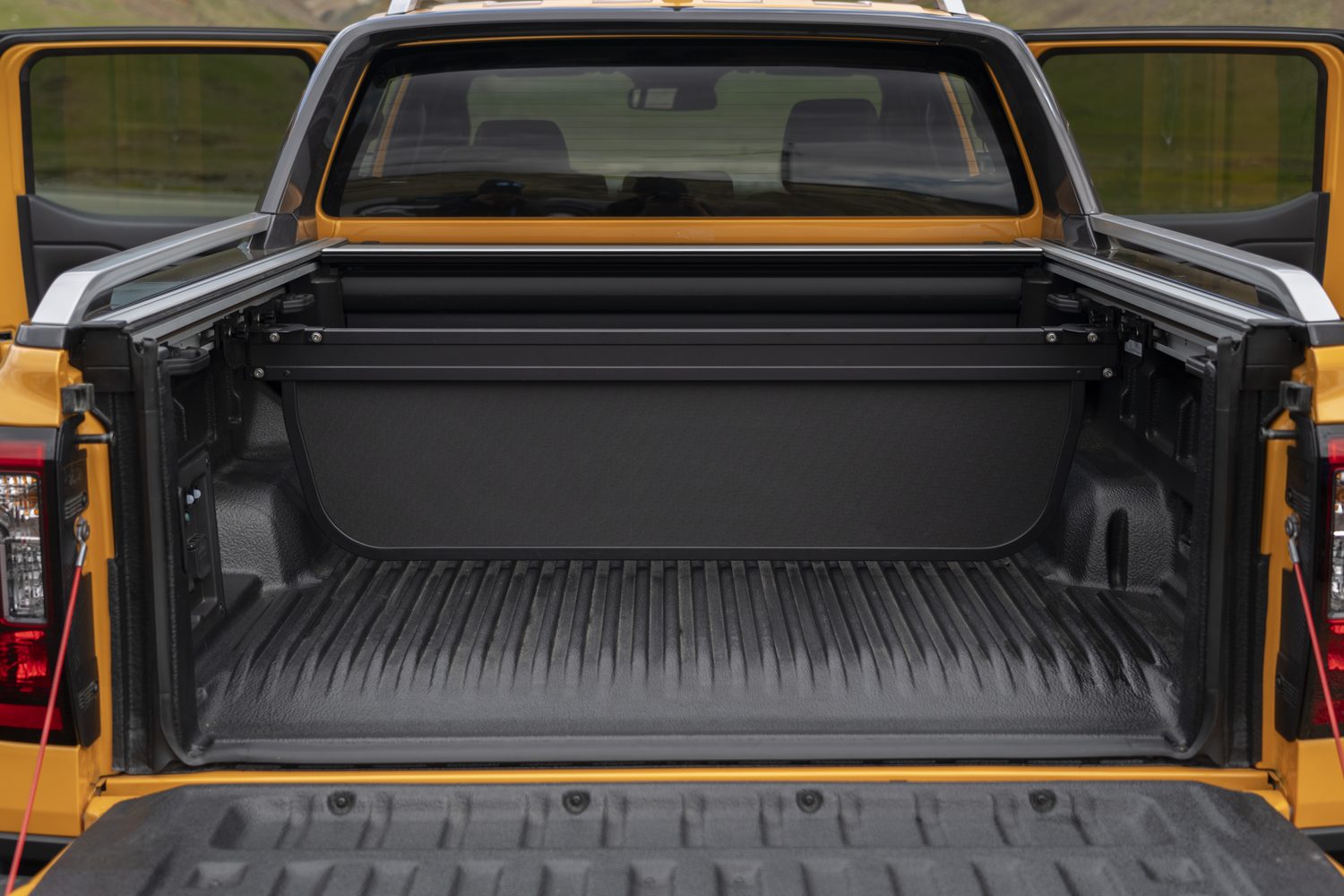
The Ford Ranger PHEV can carry up to 993kg in the cargo bed in XLT specification, while the Ranger PHEV Wildtrak and Stormtrak models can carry up to 940kg each. All versions of the Ranger PHEV are rated to tow up to 3,500kg and the gross train mass for all versions is 6,600kg. The roof is also rated to carry 350kg statically and 80kg when moving.
How far can the Ranger PHEV battery last?
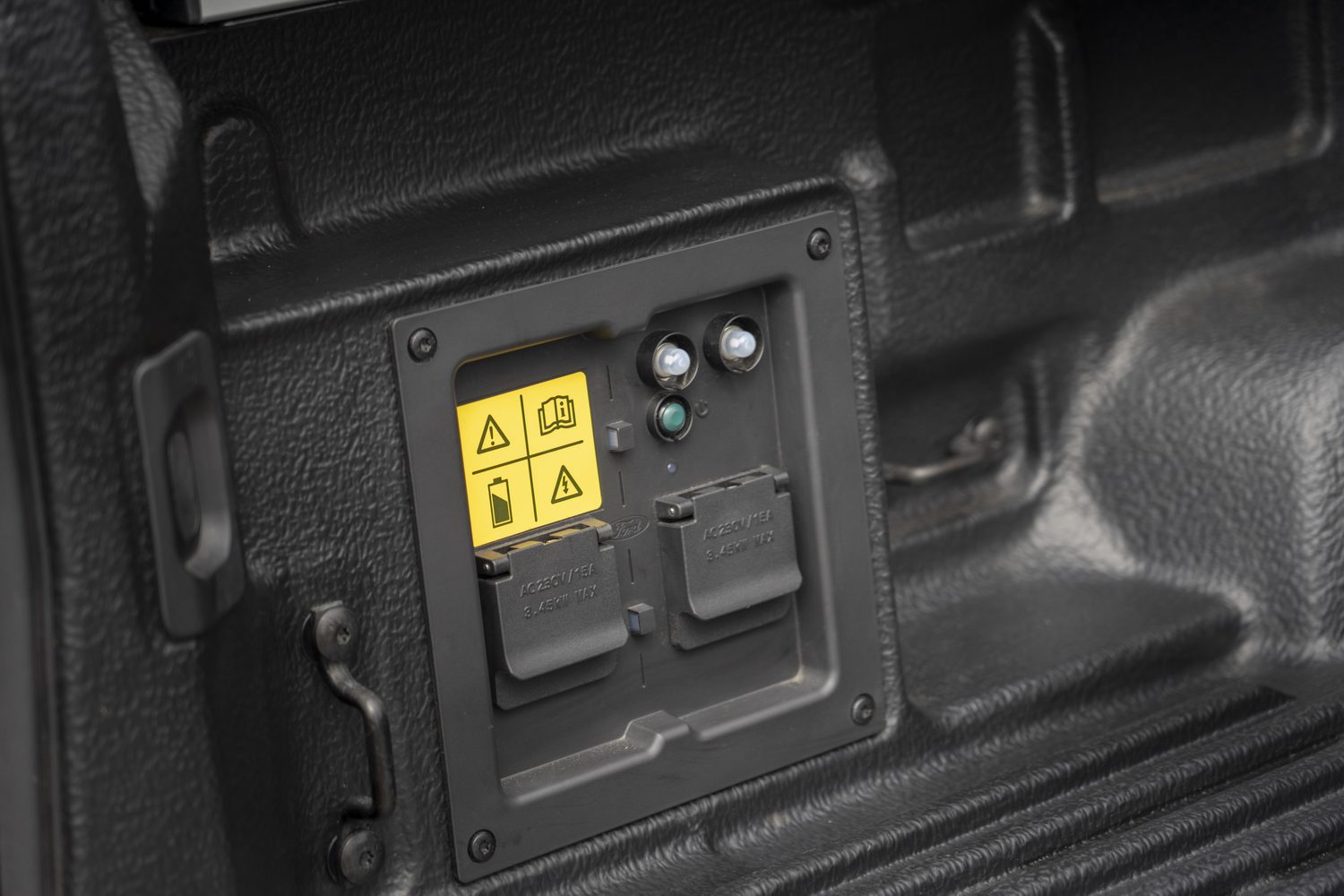
According to the WLTP, the Ford Ranger PHEV can drive up to 43 kilometres using only power from the 11.8kWh battery. In our test drive the distance was slightly less, but we expect in most average conditions drivers should achieve more than 35 kilometres.
Want to know more about the Ranger PHEV?
If there's anything not covered in this review of the Ranger PHEV that you'd like to know, feel free to make use of our Ask Us Anything service to readers.

